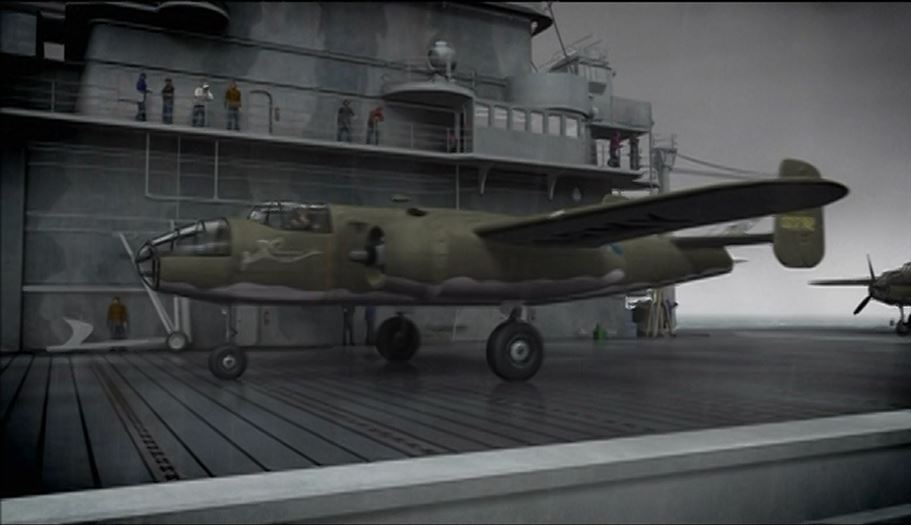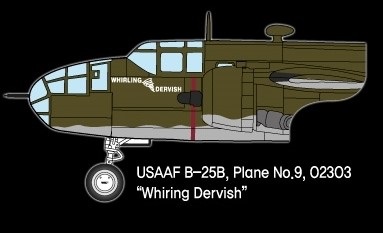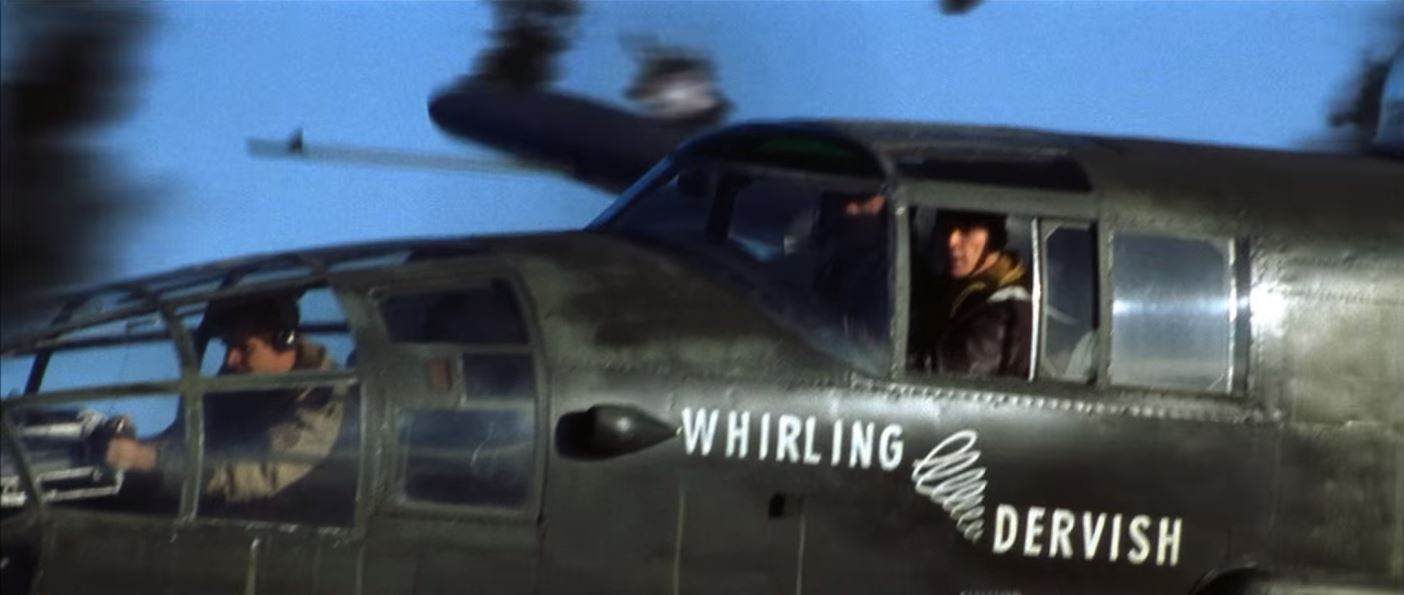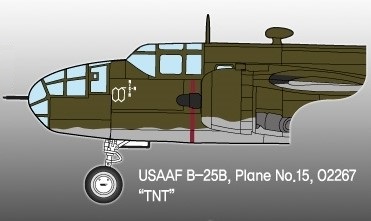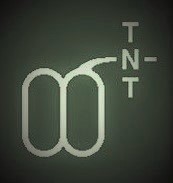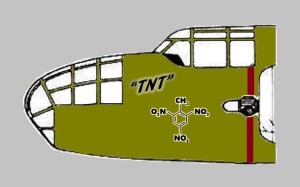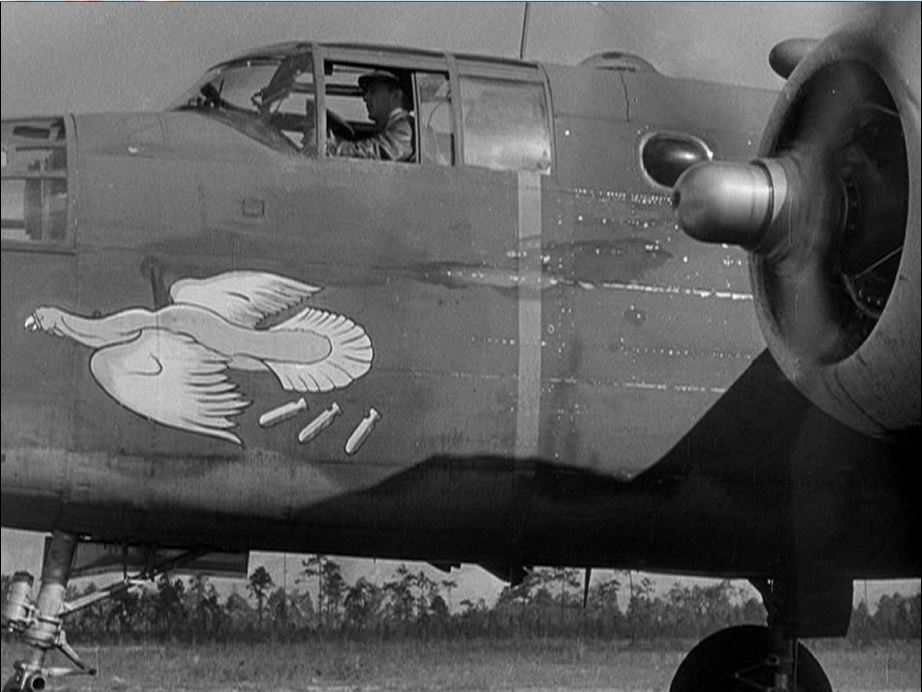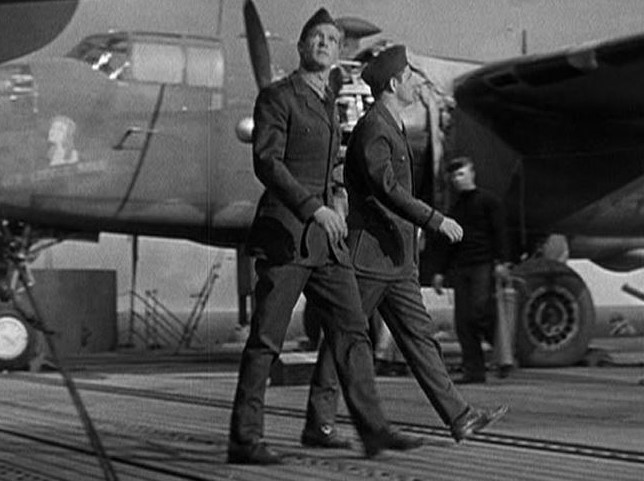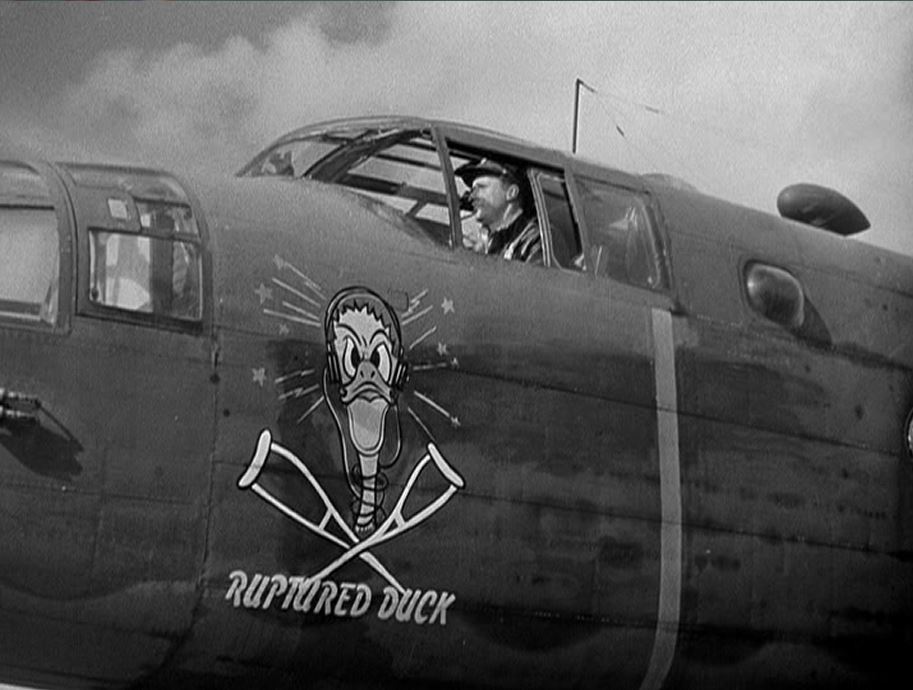This is Part 2 of Shigeru Itaya Leads the Zeros at Pearl Harbor. It is a review of the Dragon Wings 50017 1/72 scale model of Itaya’s Zero at Pearl Harbor. For a brief biographical note on Shigeru Itaya, please refer to the previous post. Today, December 7, 2016, on the 75th anniversary of the attack on Pearl Harbor, let us remember the men who died that day.
Itaya’s A6M2 Zero, Tail No. AI-155
As discussed in Part 1, Itaya led the 43 Zeros from all carriers in the first wave of the attack on Pearl Harbor. In each wave the Zero planes were the first airborne, both because they needed the least runway to take off and in order to protect the slower, less maneuverable torpedo and dive bombers that followed. As the leader of the first wave of Zeros, Itaya was the first Japanese pilot airborne during the attack.
As noted previously, there is precious little information available on Itaya. This dearth of information extends to Itaya’s plane at Pearl Harbor, a Mitsubishi A6M2 Zero, tail no. AI-155. Although there are some references on the internet that Itaya’s Zero’s tail no. may have been something other than AI-155, the books I consulted consistently use that number. To my knowledge, there are no existing photos of the AI-155, though there are enough photos of other planes from the Akagi aircraft carrier to give us a reasonably accurate understanding of its colors and markings.
Below is a color profile from what is probably the most comprehensive source of information on the colors and markings of WWII Japanese aircraft, Eduardo Cea’s eight-volume treatise entitled Japanese Military Aircraft. I scanned this particular profile from Volume 2, The Air Force of the Japanese Imperial Navy: Carrier-Based Aircraft, 1922-1945 (I). While I’m aware that there are a number of errors in the English translation of the Spanish text that are somewhat distracting, the series is beautifully illustrated, incredibly informative, and inarguably comprehensive, and, being fluent in Spanish, I blithely overlooked the errors. 
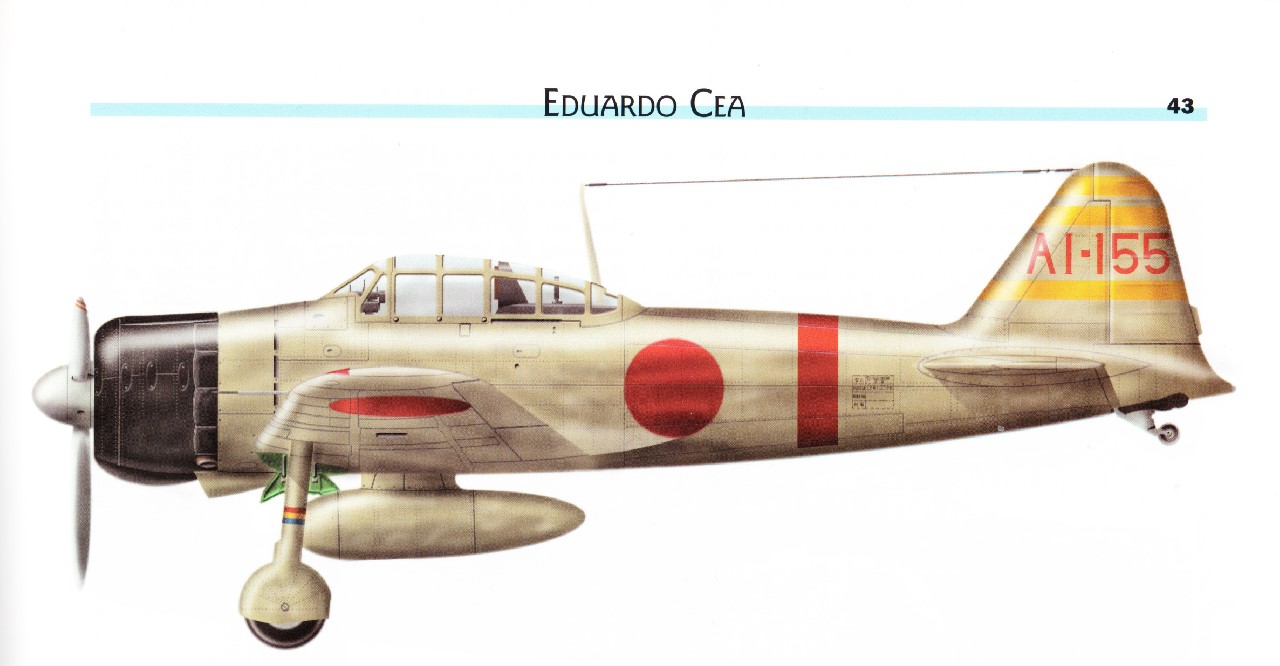 Itaya’s Zero at Pearl Harbor has been released in 1/72 scale by three different manufacturers: Dragon Wings 50017; Forces of Valor 85032; and Witty Wings 72-012-001. This post concerns the Dragon Wings 50017. Reviews of the other two will follow shortly in separate posts, with equivalent photos of each of the three models for ease of comparison.
Itaya’s Zero at Pearl Harbor has been released in 1/72 scale by three different manufacturers: Dragon Wings 50017; Forces of Valor 85032; and Witty Wings 72-012-001. This post concerns the Dragon Wings 50017. Reviews of the other two will follow shortly in separate posts, with equivalent photos of each of the three models for ease of comparison.
The Dragon Wings 50017 Zero
Below is a portside view of the Dragon model. Immediately apparent is the beautiful caramel finish. Putting aside the continuing debate about whether the caramel color was the effect of a protective layer of varnish or the natural result of the aging of the pigments, the fact remains that the Zeros had an “ameiro” tone, which means “caramel-colored” in Japanese. Upon review of Zeros in my collection from a dozen different manufacturers, I’m convinced that Dragon is the only manufacturer that got it right (though Hobby Master produced some terrific “ameiro” D3A1 Vals). If nothing else, the Dragon finish matches the description and color plates in Cea’s eight-volume set on Japanese planes.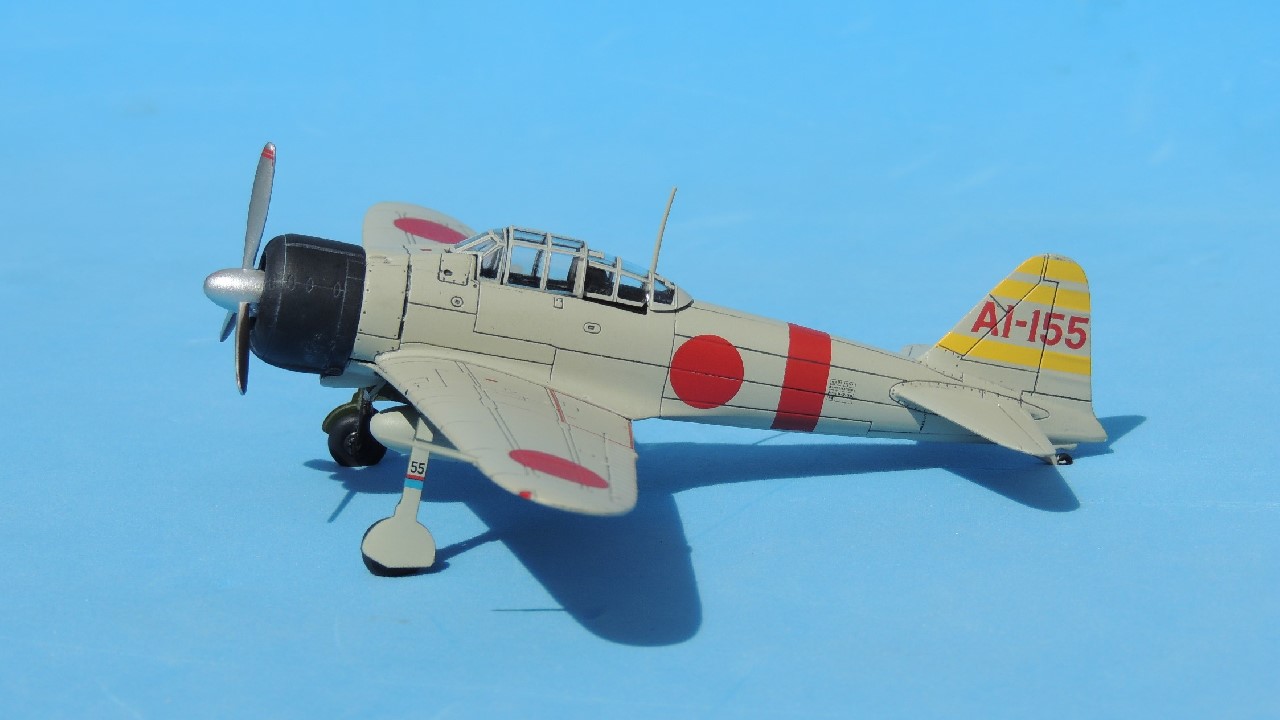 In the photo below, note the pronounced panel lines, which disappointed some collectors. In my view, however, it is not so much that the lines are significantly overscaled as the fact that Dragon inexplicably “inked” them — for lack of a better term — as one would highlight the crevices on a tank with an umber wash to make them stand out better. It is this combination of overscaling and “inking” that gives the impression that the panel lines are deeper and wider than they actually are.
In the photo below, note the pronounced panel lines, which disappointed some collectors. In my view, however, it is not so much that the lines are significantly overscaled as the fact that Dragon inexplicably “inked” them — for lack of a better term — as one would highlight the crevices on a tank with an umber wash to make them stand out better. It is this combination of overscaling and “inking” that gives the impression that the panel lines are deeper and wider than they actually are.
The photo below provides an excellent view of the tail no. “AI-155.” The “AI” code was the designation for the Akagi aircraft carrier. In the three-digit number after “AI”, the first digit (“1”) indicates that it is a fighter plane. The last two digits (“55”) are simply the aircraft number within the unit. The tail numbers on Japanese carrier aircraft were usually red except on two carriers (Zuiho and Hosho) whose tails were already red. The identification numbers on aircraft from those two carriers were white so as to make them stand out against the red tails.
Note also the three horizontal yellow stripes on the tail that indicated command: three stripes for the group leader; two stripes for a squadron leader (9 aircraft); and one stripe for a flight leader (3 aircraft). Note also the “no step” rectangular area outlined in red at the rear of each wing next to the wing root.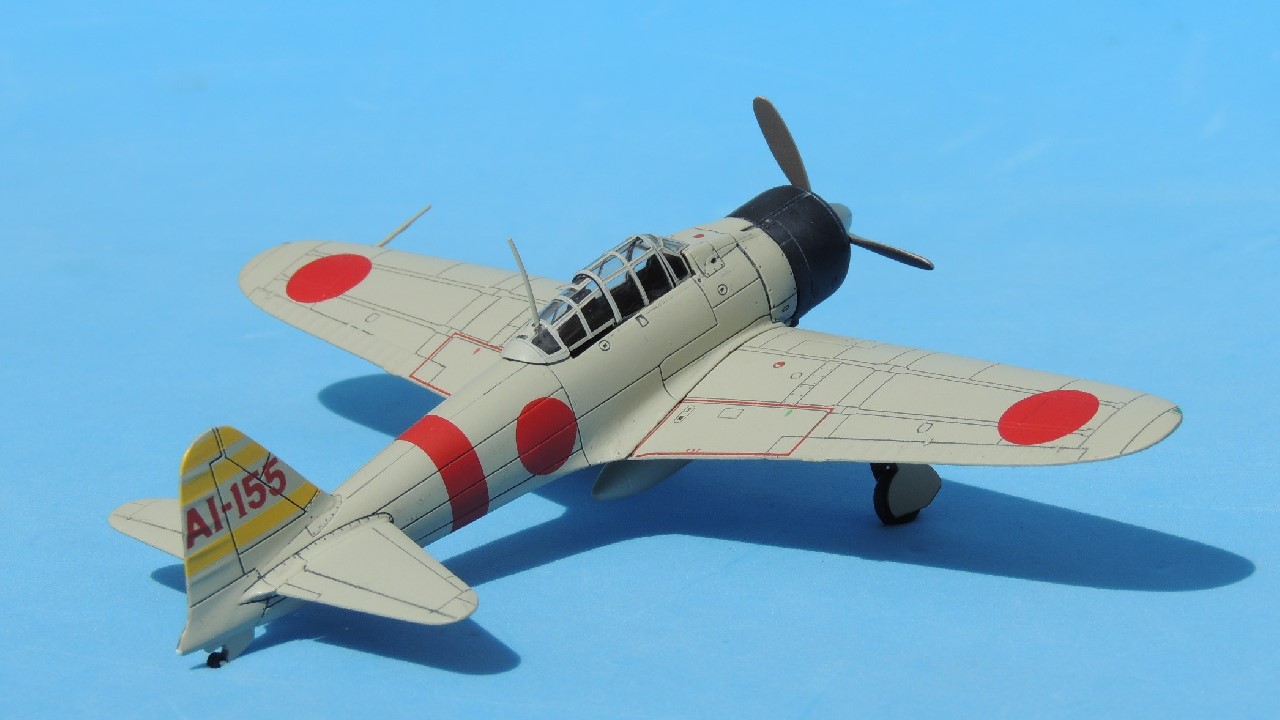
The photo below provides an excellent view of the Hinomaru, which was carried on both sides of the fuselage aft of the wing and on both the upper surface and underside of each wing — six “circles of the sun” in total. The vertical red stripe is the identification mark for the aircraft carrier Akagi.
Note also the manufacturing plate stenciled just aft of the red stripe. The inset shows that the plate bears the number 7702, meaning it was the 7,702nd Zero built. The “2-3-30” means it was built in the Japanese year 2602, third month, thirtieth day = March 30, 1942. (Yes, more than three months after Pearl Harbor. 
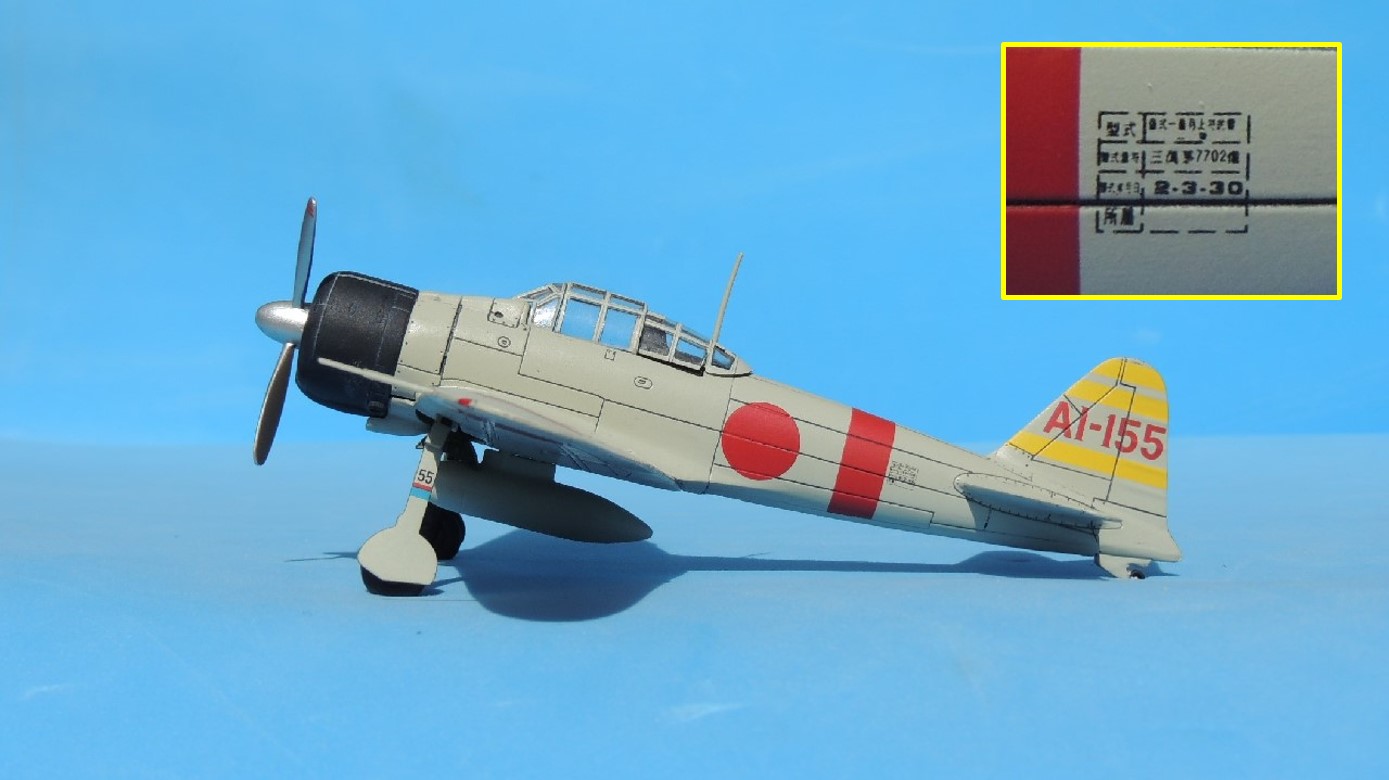 Below is a shot of the starboard side. Note the absence of the manufacturing plate, which was only stenciled on the port side.
Below is a shot of the starboard side. Note the absence of the manufacturing plate, which was only stenciled on the port side.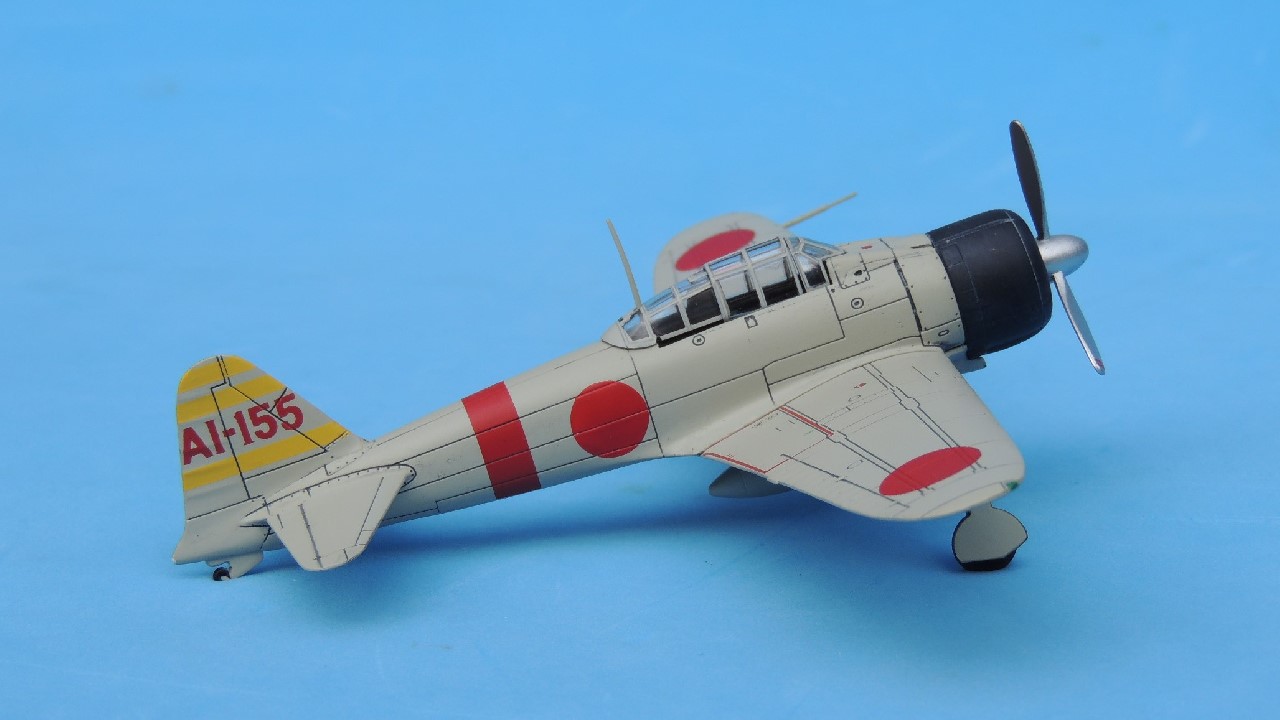 In the photo below, note the polished natural metal propeller with the two red warning stripes on the tips of the blades. As is the case with the vast majority of 1/72 scale prebuilt models, the propeller spins freely. Note the outlets on the leading edges of the wings just above the landing struts for the 20mm cannons. Also on the leading edge of the portside wing, note the pitot tube.
In the photo below, note the polished natural metal propeller with the two red warning stripes on the tips of the blades. As is the case with the vast majority of 1/72 scale prebuilt models, the propeller spins freely. Note the outlets on the leading edges of the wings just above the landing struts for the 20mm cannons. Also on the leading edge of the portside wing, note the pitot tube. The photo below shows the aircraft’s number “55” on the landing strut cover, which matches the last two digits of the tail number. Note the correct cowling for an A6M2, which had four oval-shaped fasteners on each side of the matte black cowling, one on the front part of the cowling and three on the sides. Note also the metal drop tank that gave the Zero an extra 73 imperial gallons of fuel (87 US gallons), significantly increasing its range. Later drop tanks were made of wood and had a slightly different shape.
The photo below shows the aircraft’s number “55” on the landing strut cover, which matches the last two digits of the tail number. Note the correct cowling for an A6M2, which had four oval-shaped fasteners on each side of the matte black cowling, one on the front part of the cowling and three on the sides. Note also the metal drop tank that gave the Zero an extra 73 imperial gallons of fuel (87 US gallons), significantly increasing its range. Later drop tanks were made of wood and had a slightly different shape.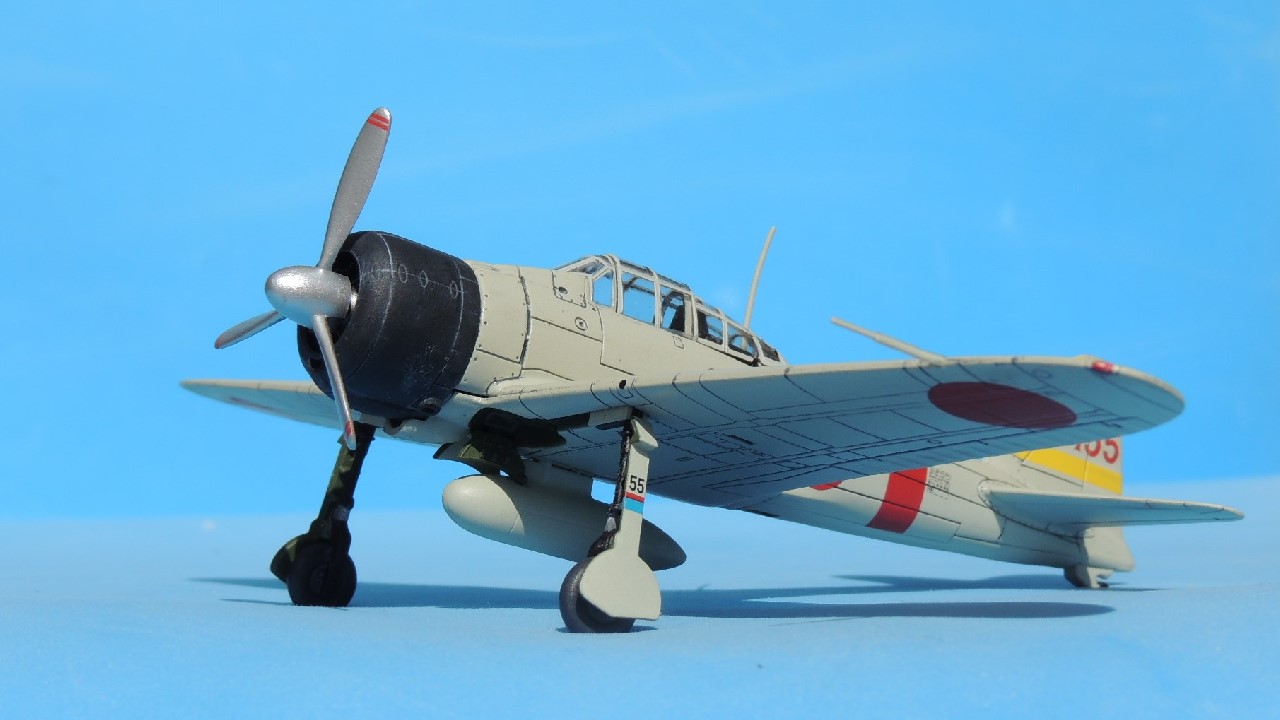
The Feature and the Rub
In the close-up below, note that the canopy slides back — an interesting feature of the Dragon model. While some collectors were critical of the noticeable gap on the rear bottom part of the canopy necessary to allow the front canopy to slide back, some of us applauded this precise feature as it opens up significant diorama possibilities. Quite obviously, the gap is overscaled. As I’ve pointed out in the past, added features often come at the expense of accuracy. Still, in this particular instance, the gap looks fine when the canopy is open. Please bear in mind that close-up photos greatly amplify defects.
The Interior
The lagniappe close-up photo below provides a good view of the interior of the canopy. Note the superbly detailed instrument panel and the handle of the control column. To my knowledge, Dragon is the only manufacturer that produced a prebuilt model with an opening cockpit and, therefore, with a detailed instrument panel. Unfortunately, Dragon did not include a pilot.
The Upshot
The Dragon Wings 50017 Mitsubishi A6M2 Zero is a superb model that closely resembles the original. The excellent casting shows no perceptible problems in its proportions. The cowling, propeller, and undercarriage are all well executed, with no apparent accuracy issues. The “ameiro” finish is beautiful, though, admittedly, the “inked” panel lines detract from the overall effect. The markings are accurate and crisp throughout. The sliding canopy is a welcome feature, at least for those of us who build dioramas. All Dragon Zeros came with wheels up and wheels down options and, in addition, this particular Dragon Zero issue included a diorama deck and display case. In my humble opinion, it’s a terrific little model that compares favorably with Zero models of most other manufacturers.
Again, thank you for your indulgence and I hope you enjoyed the post. If something looks amiss, please let me know. I would be delighted to correct inaccurate information so that this may be useful for other 1/72 scale collectors and wargamers. As always, comments, questions, corrections, and observations are welcome. Stay tuned for a review of the Forces of Valor model of the very same aircraft in the next post.

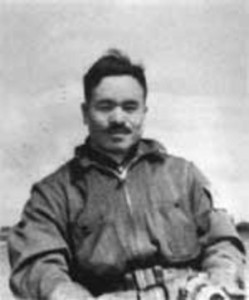
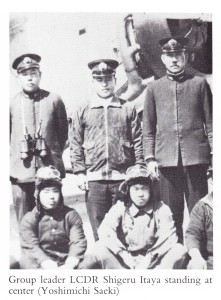
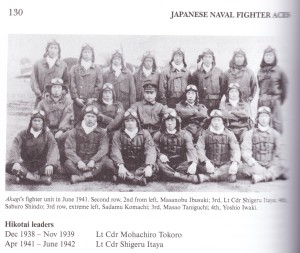

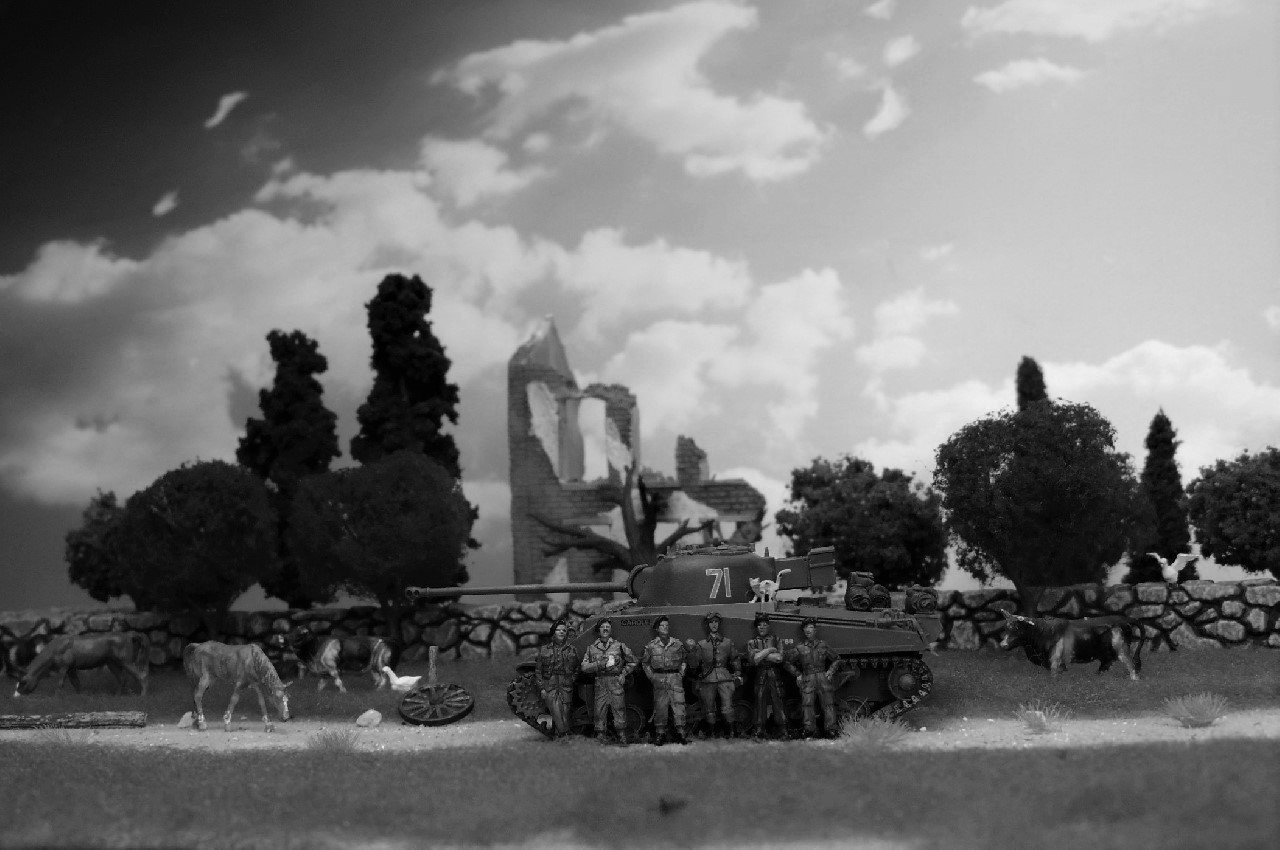
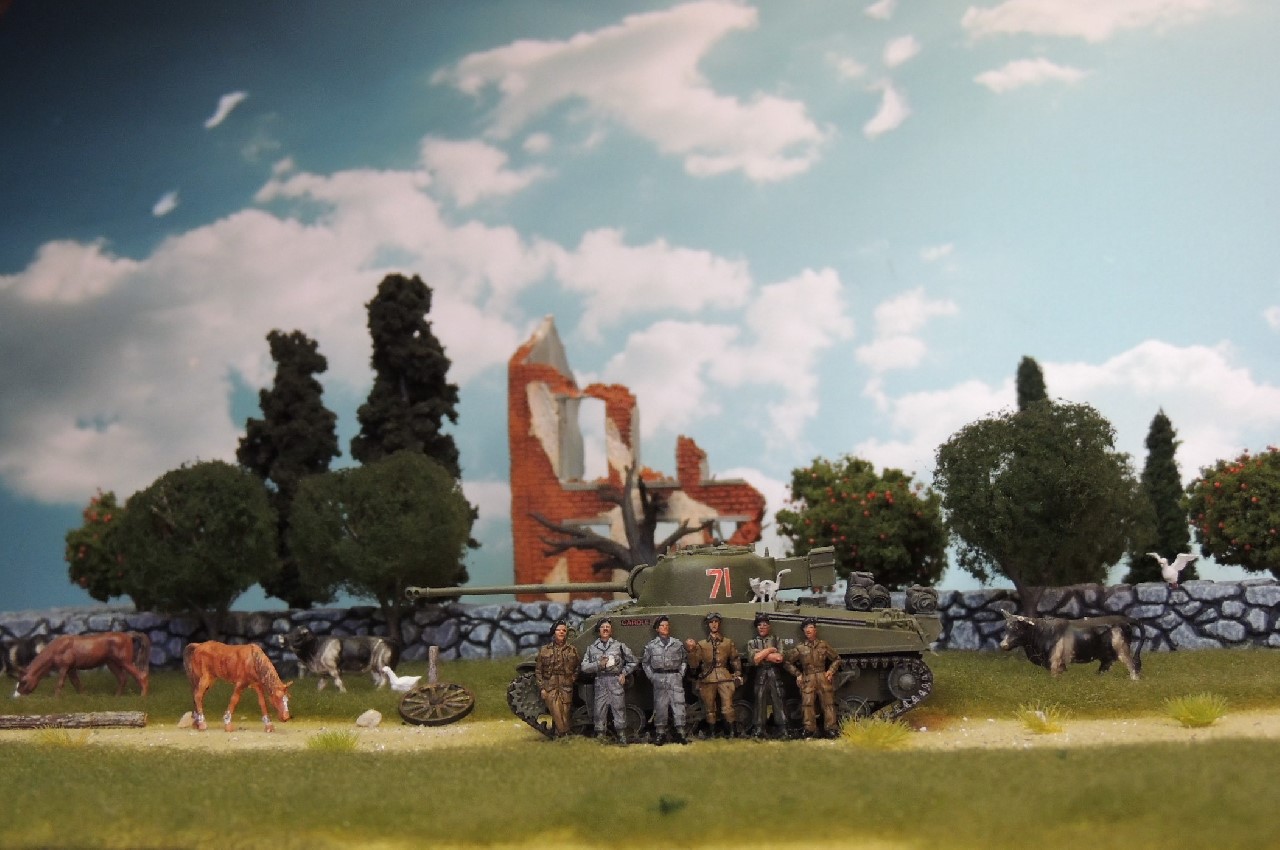
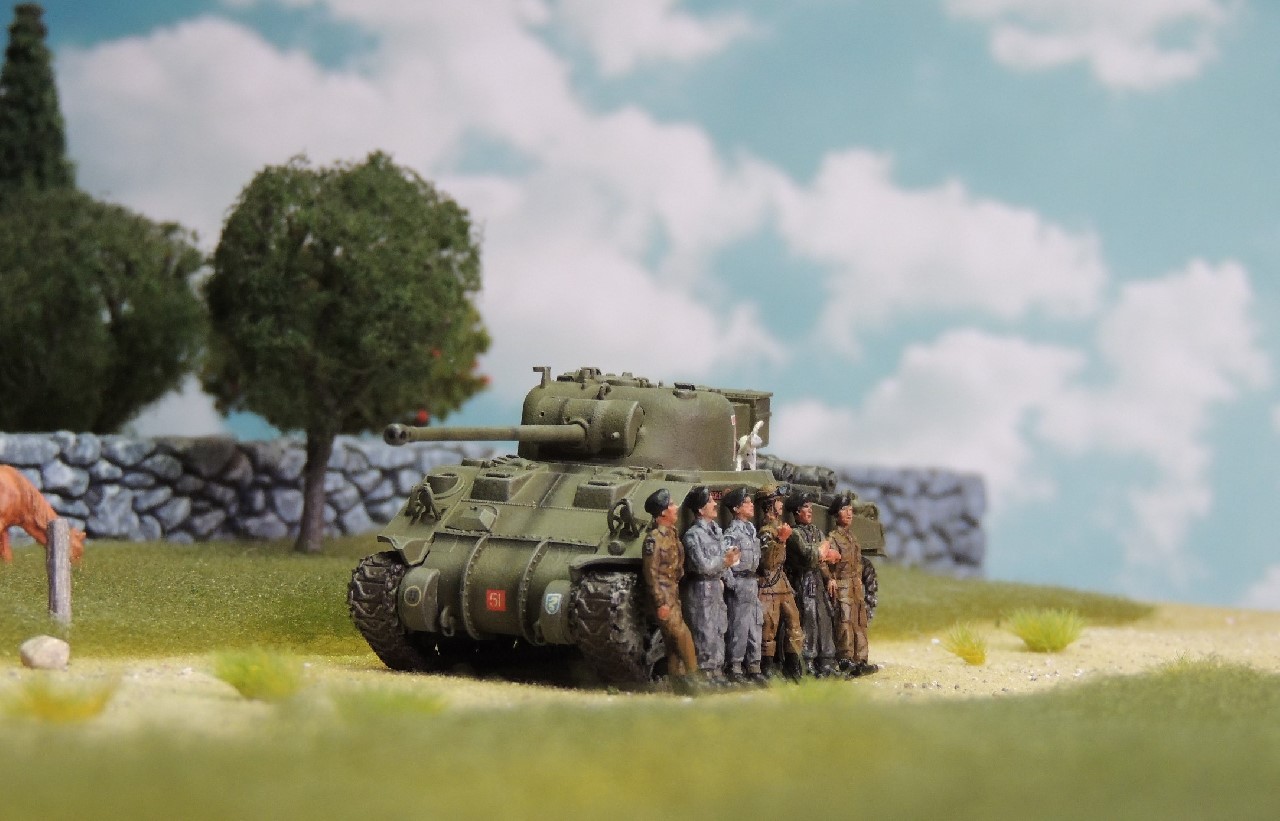
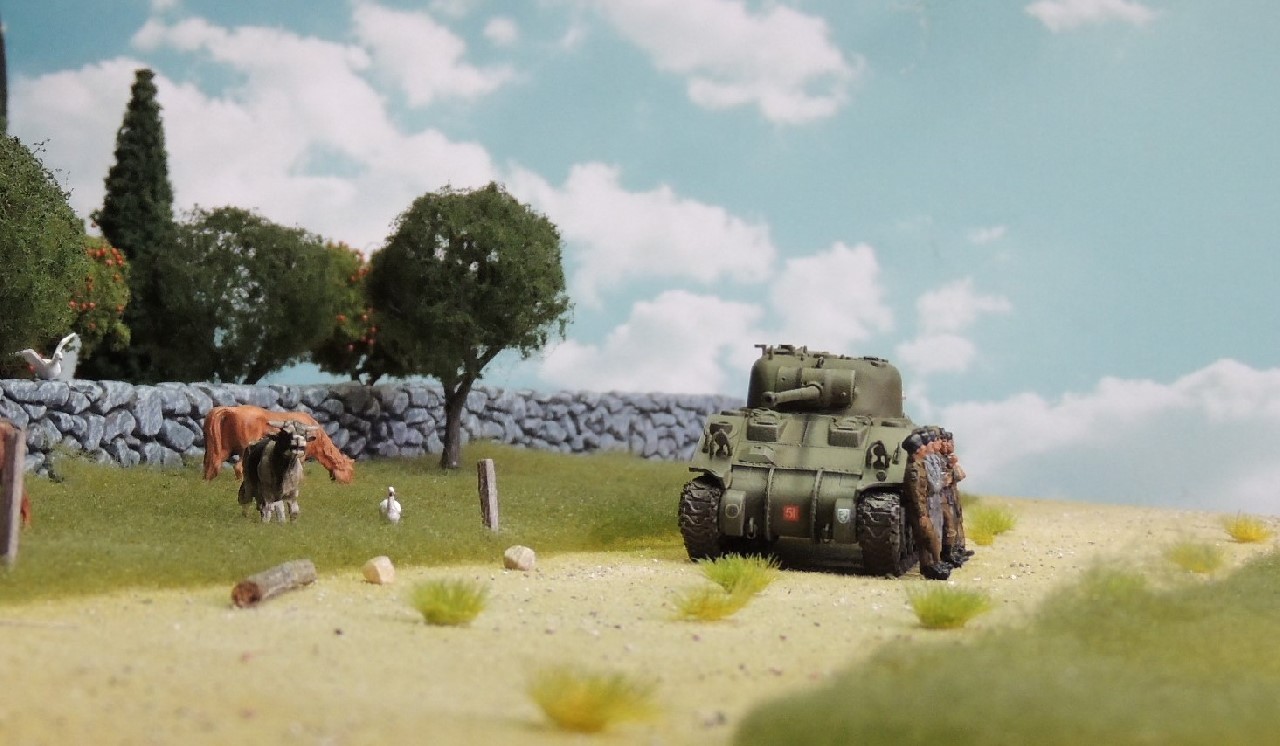
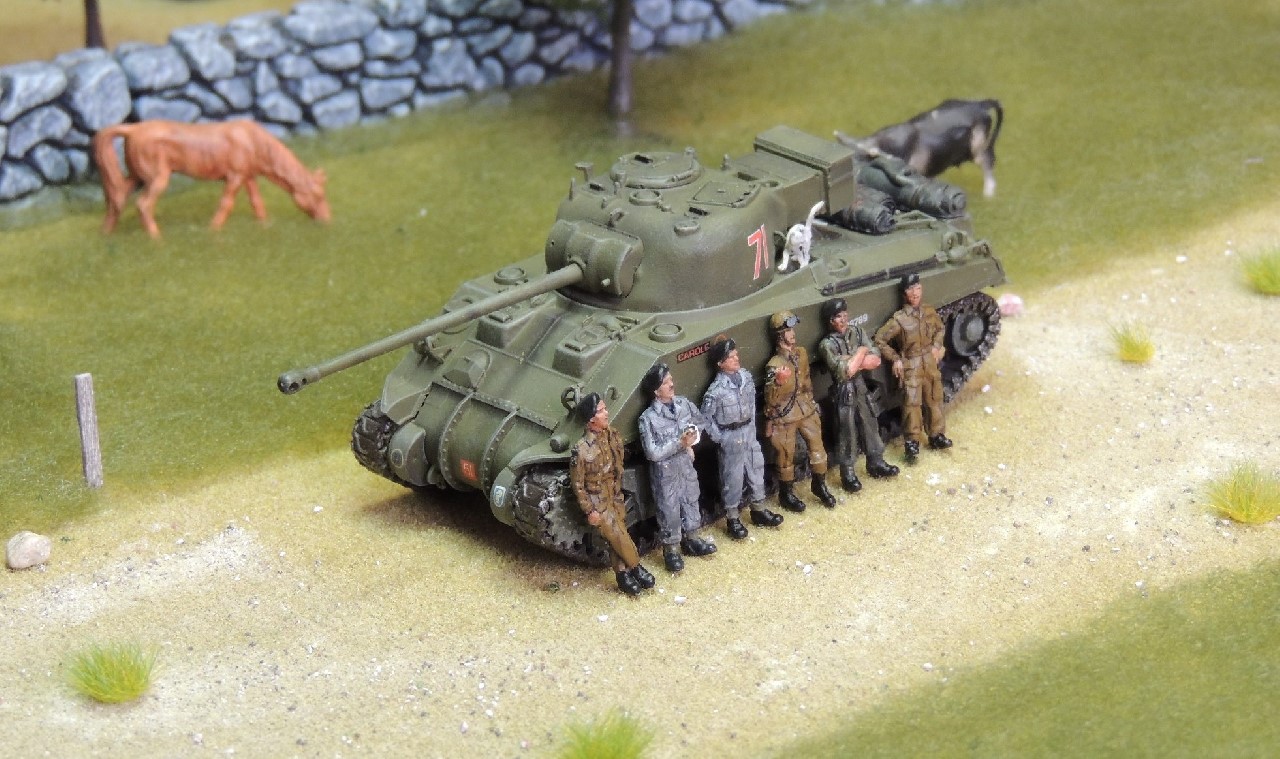
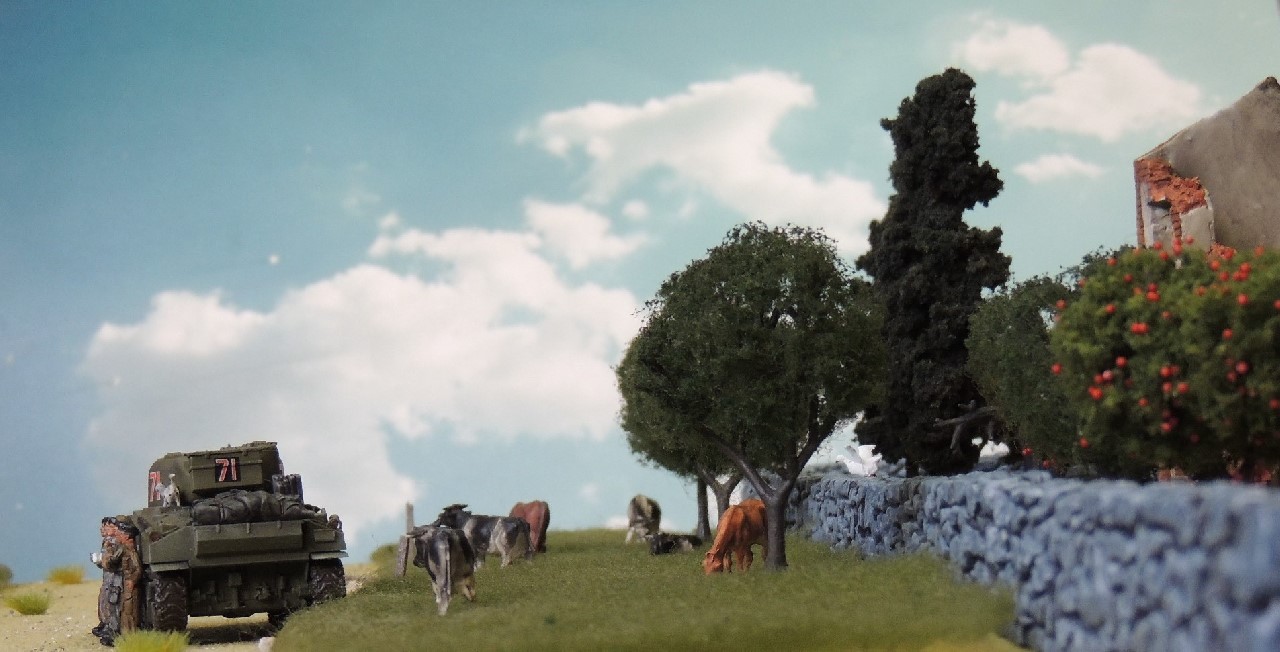
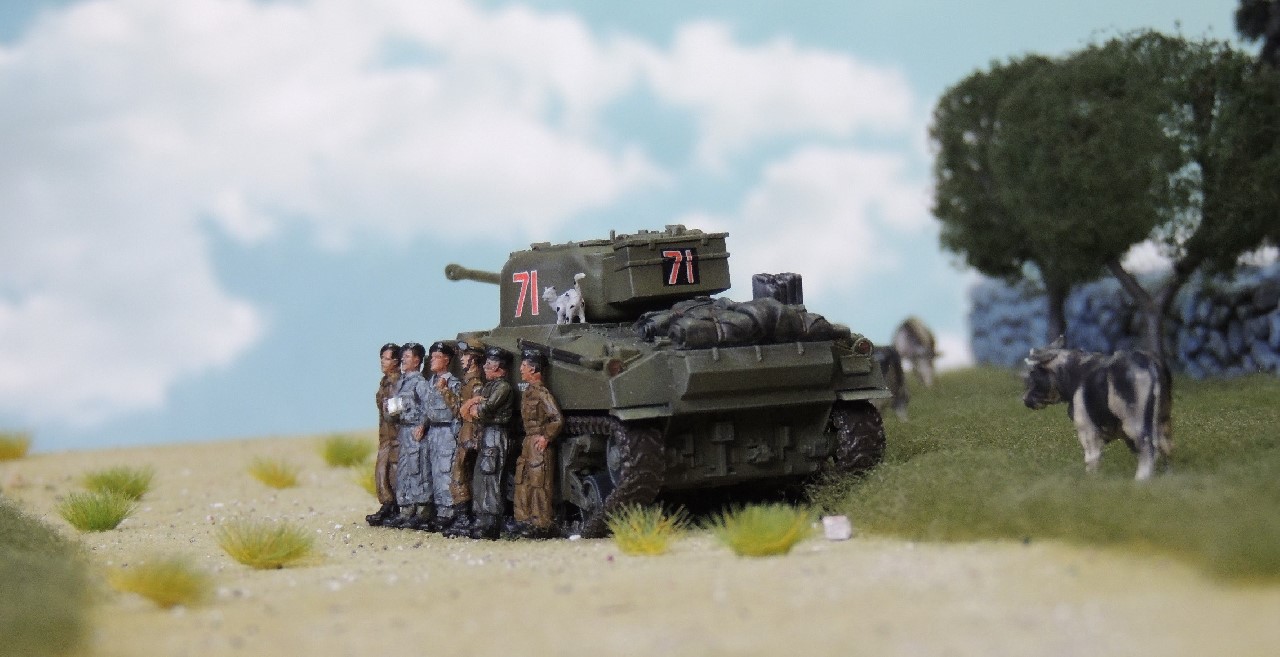
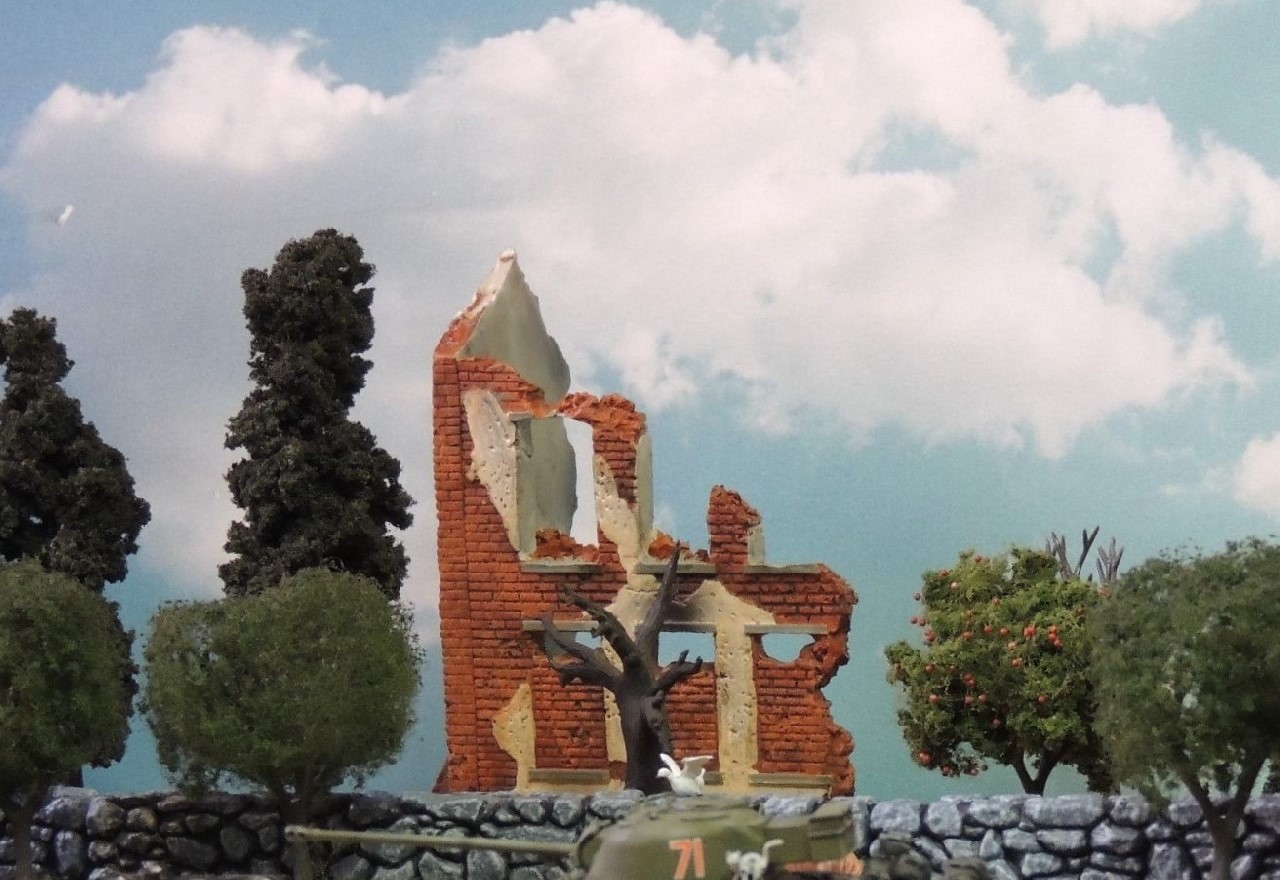
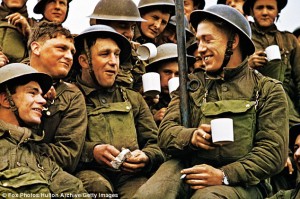
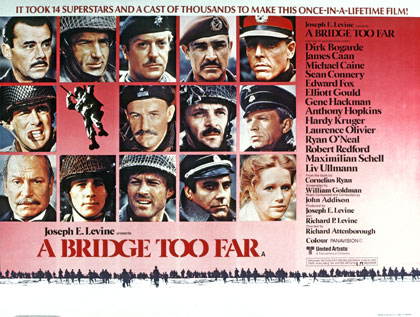
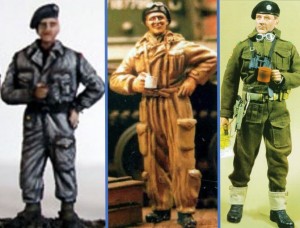
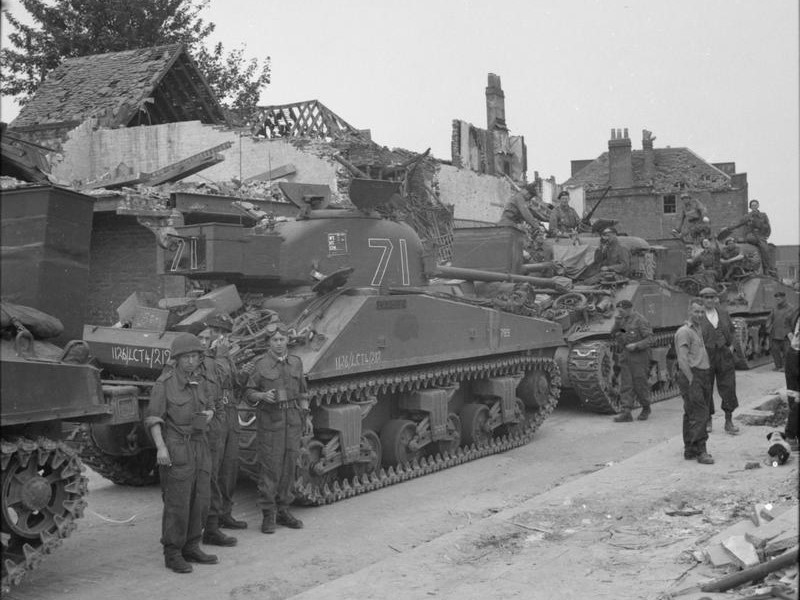
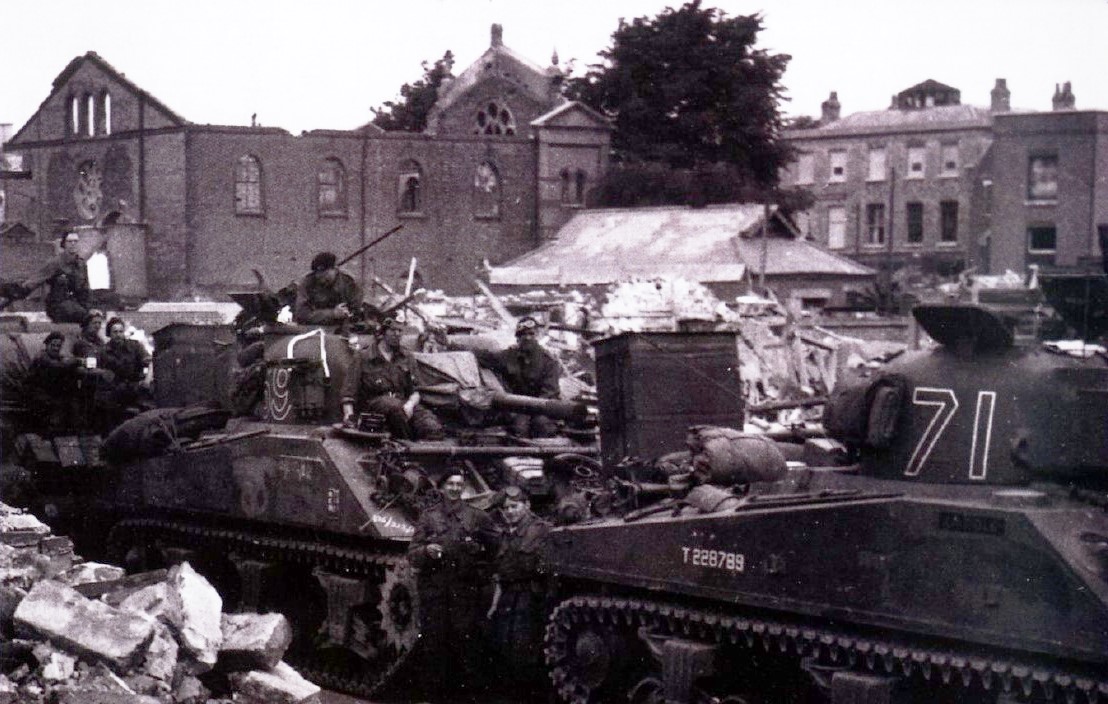
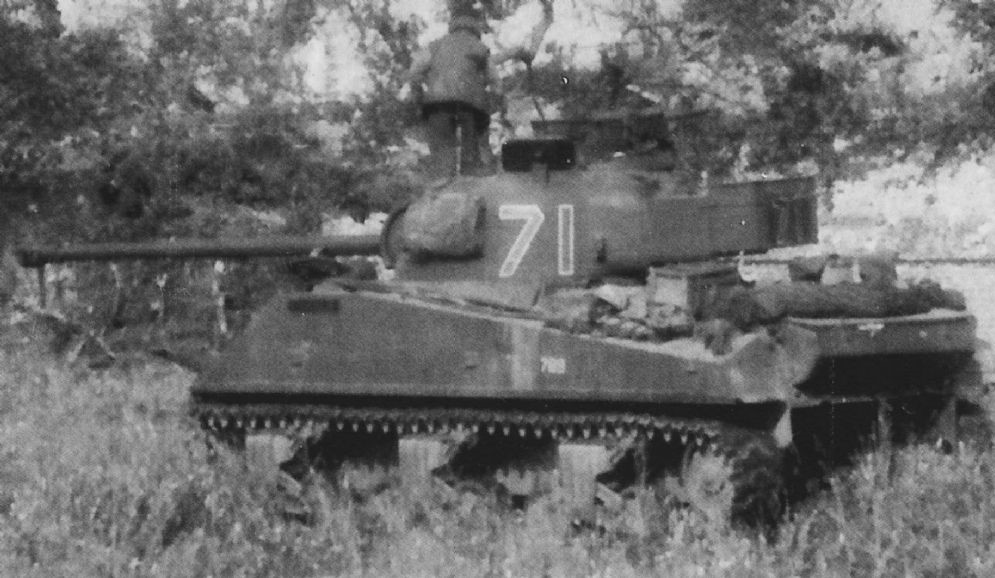
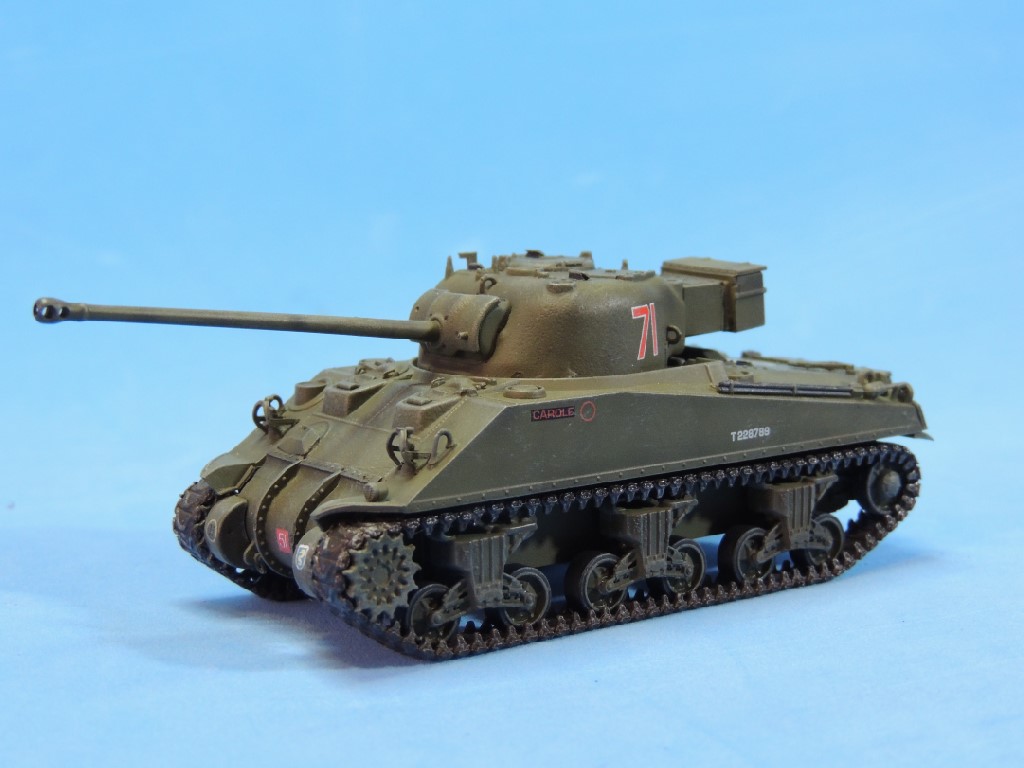
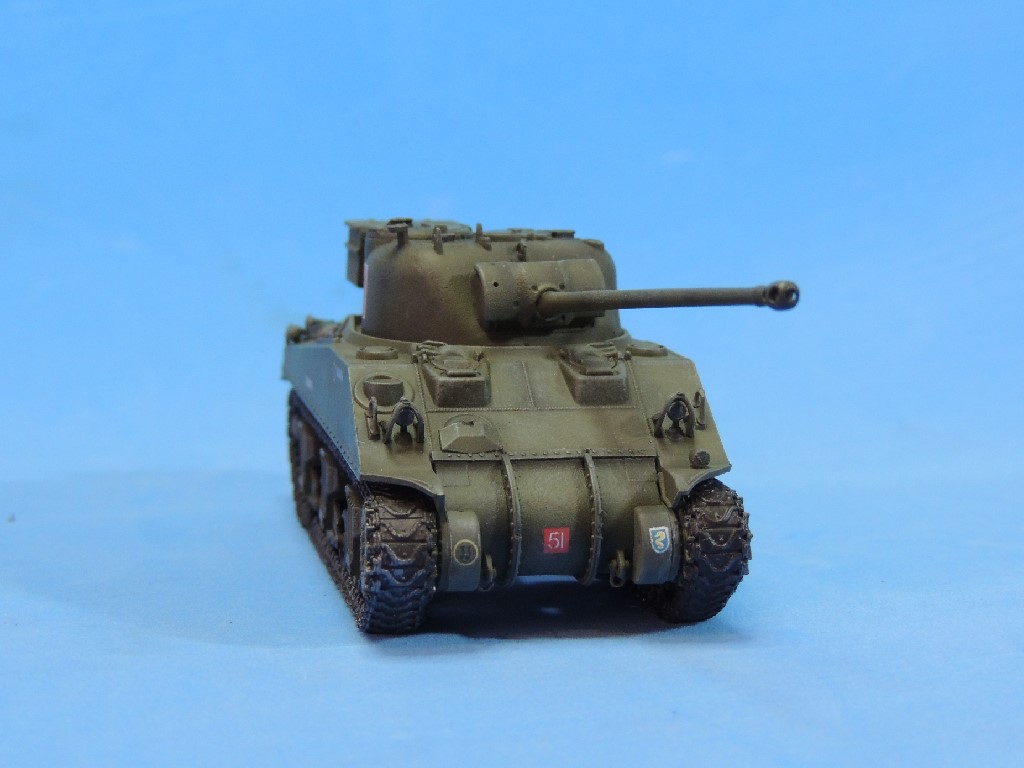
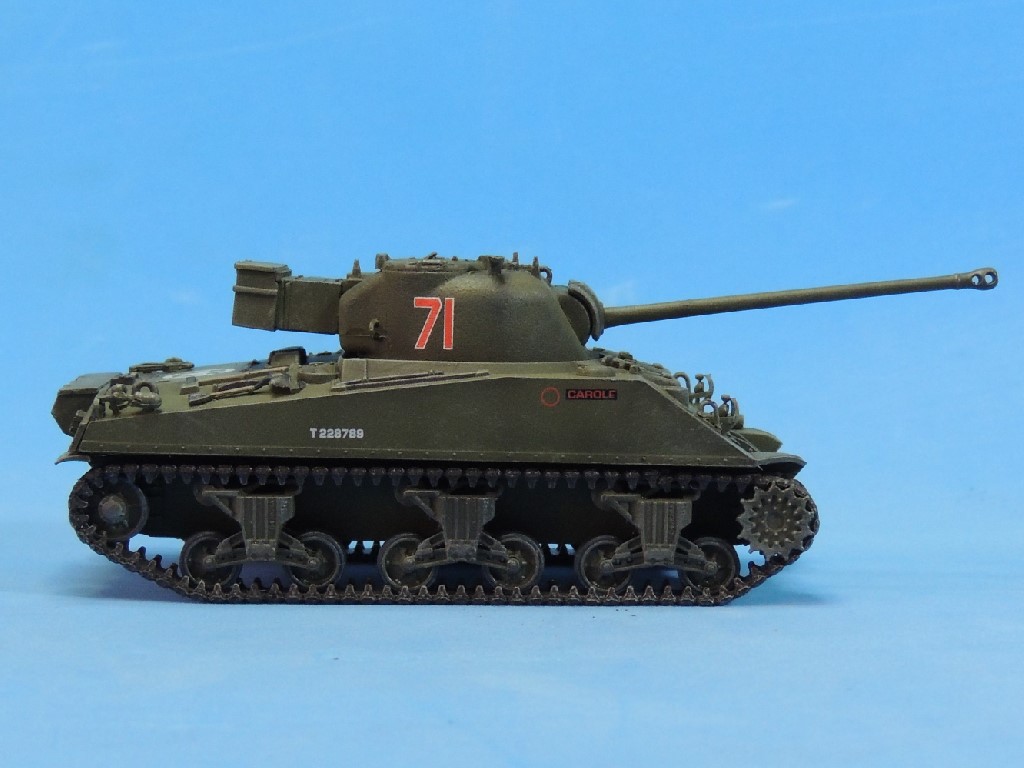
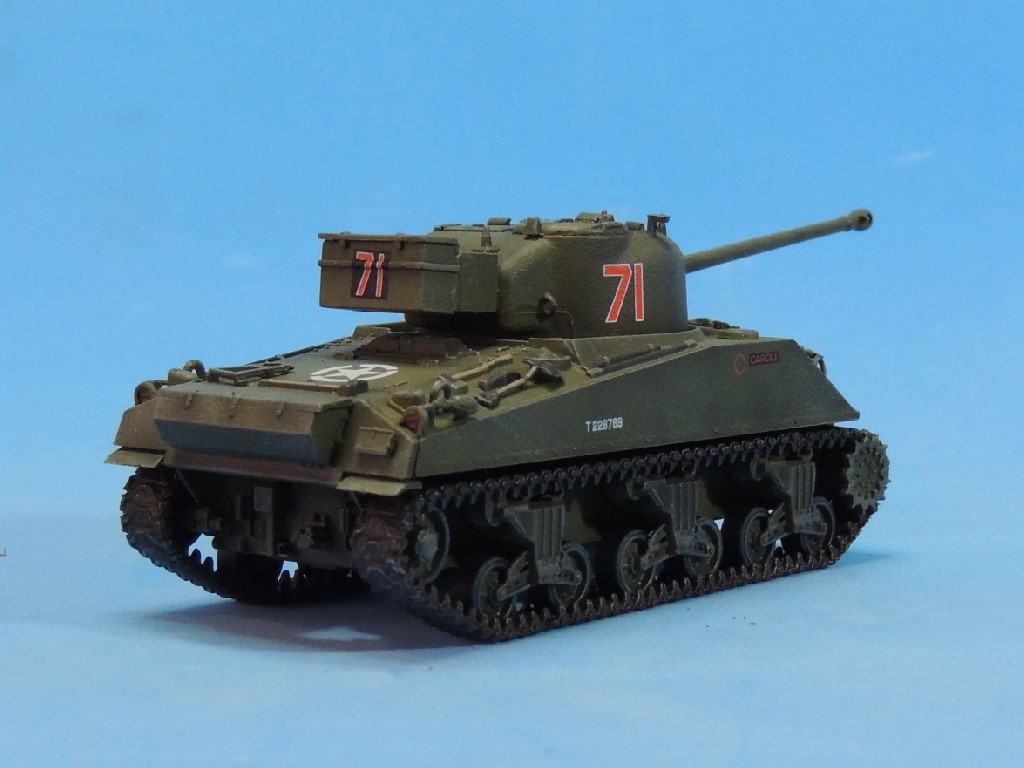
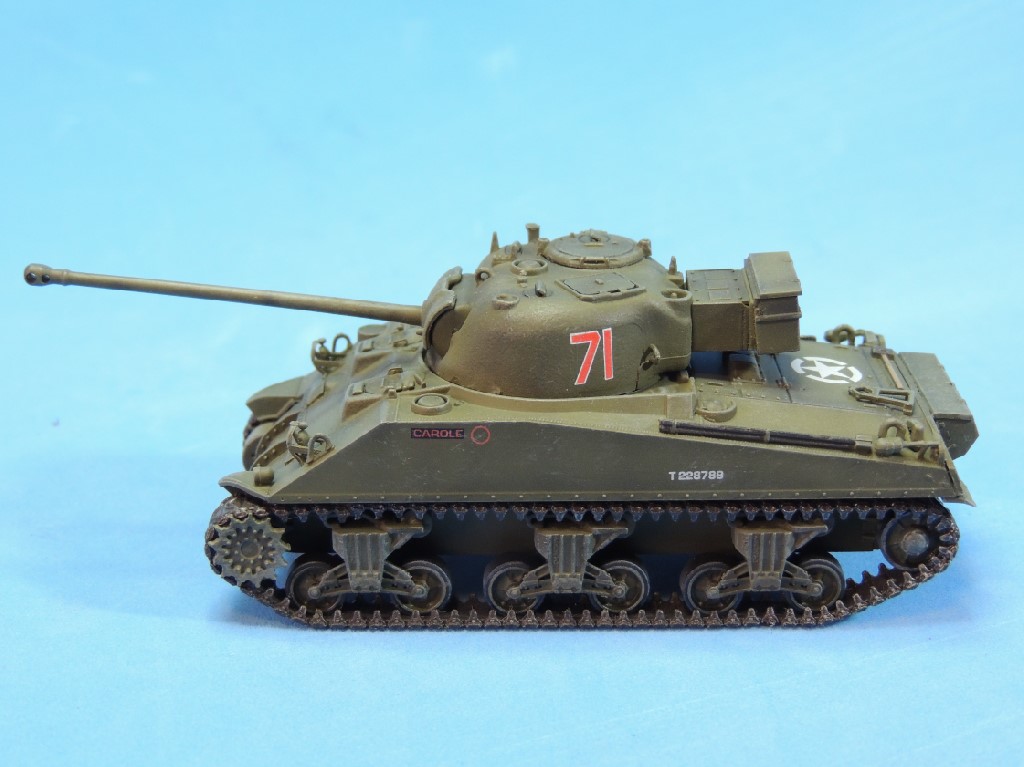
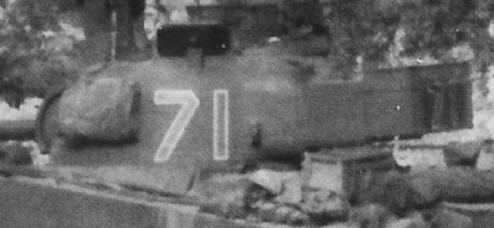
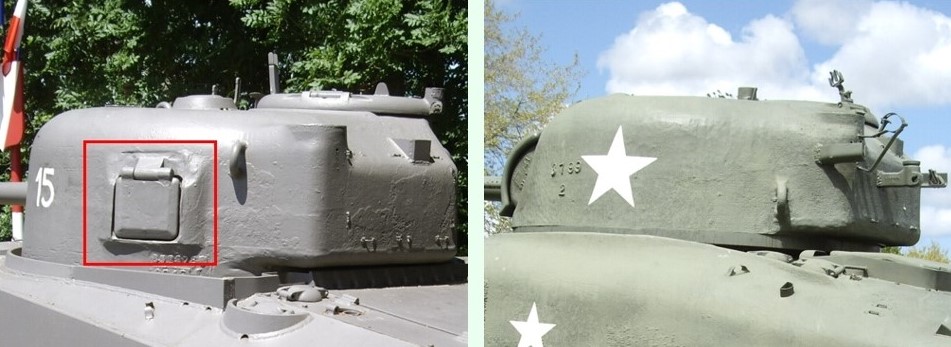
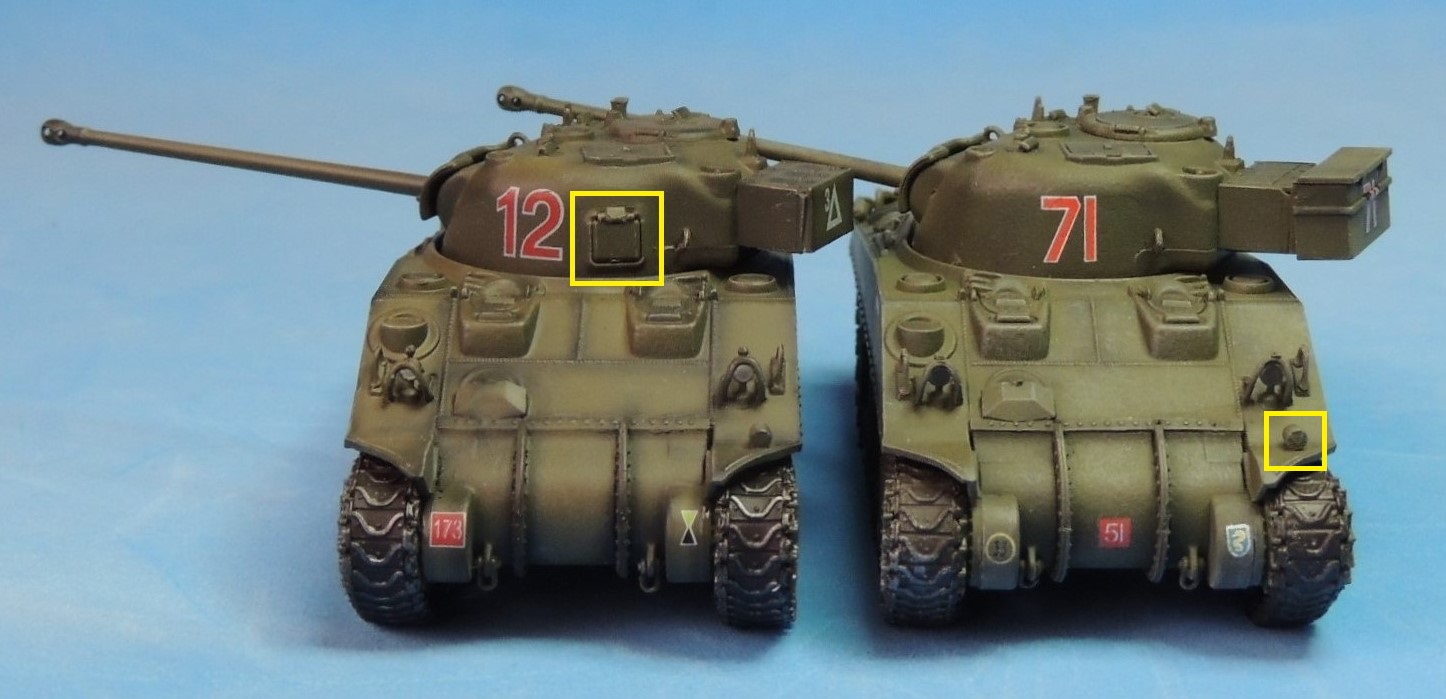
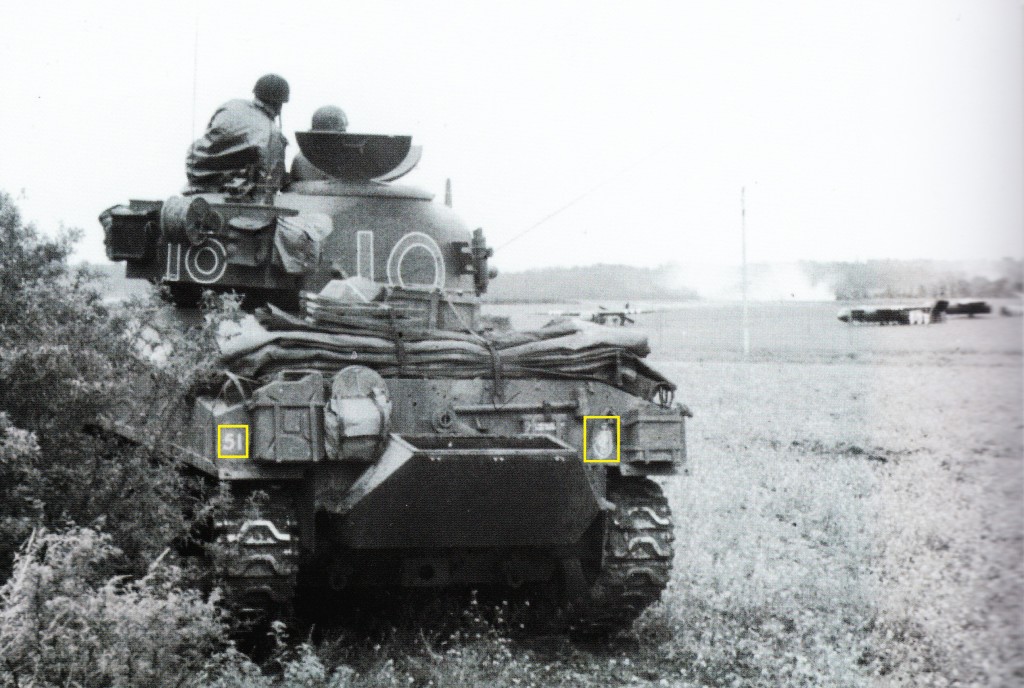

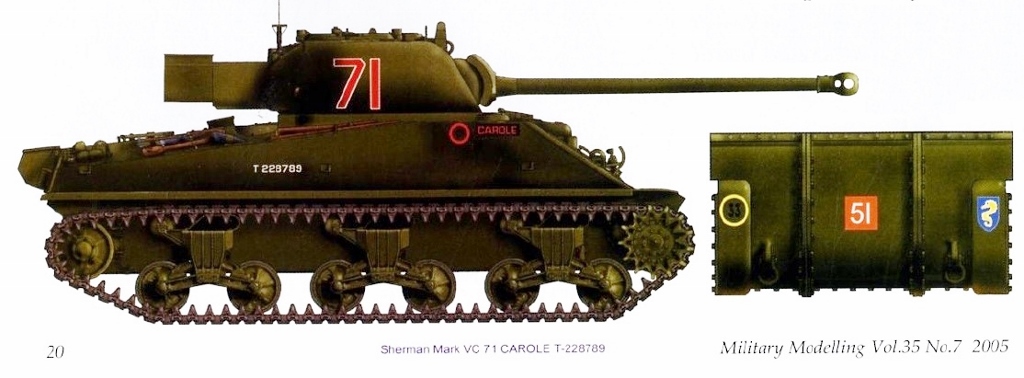
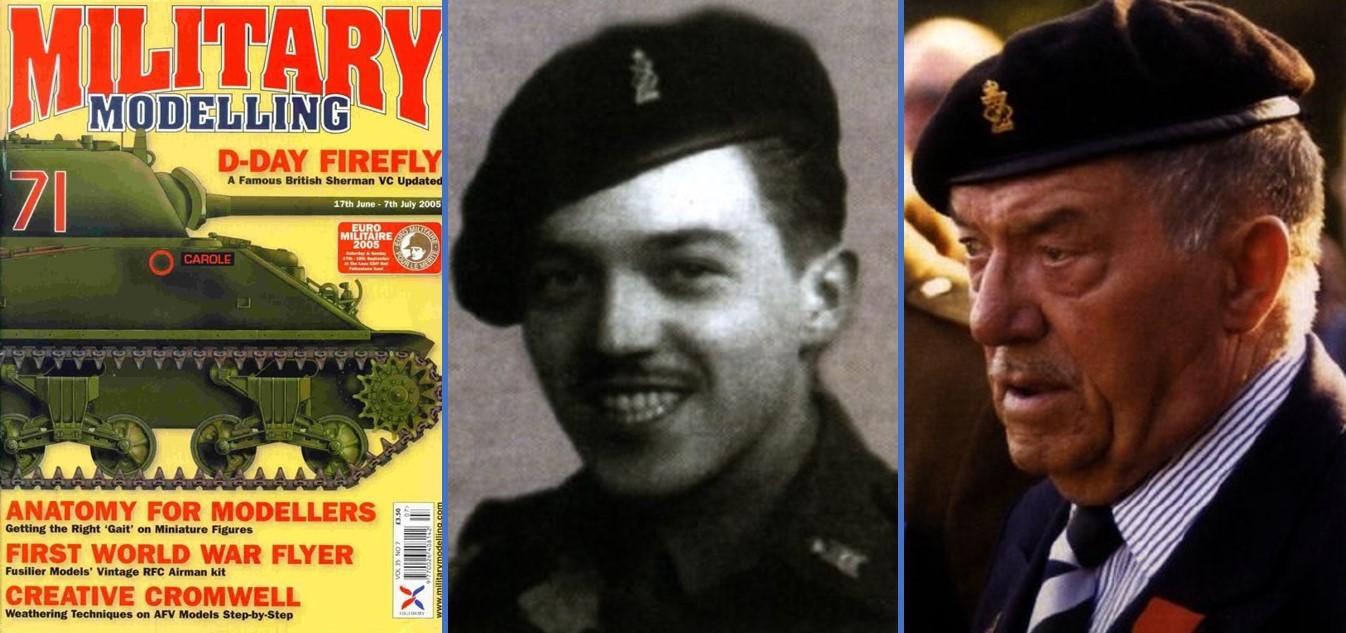
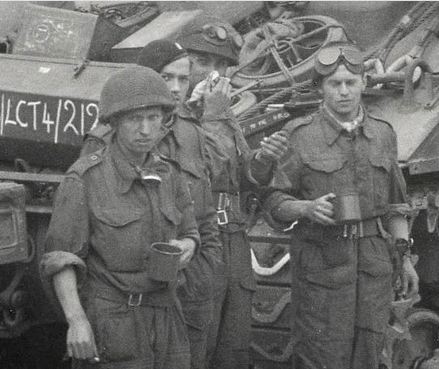
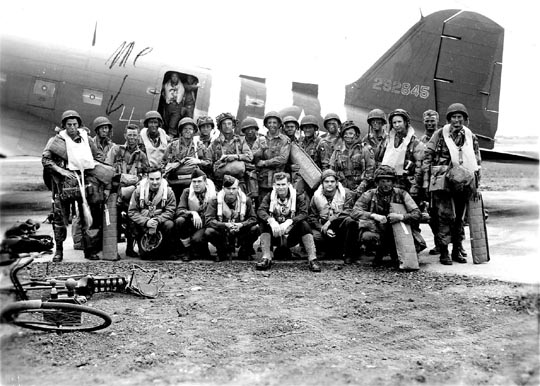
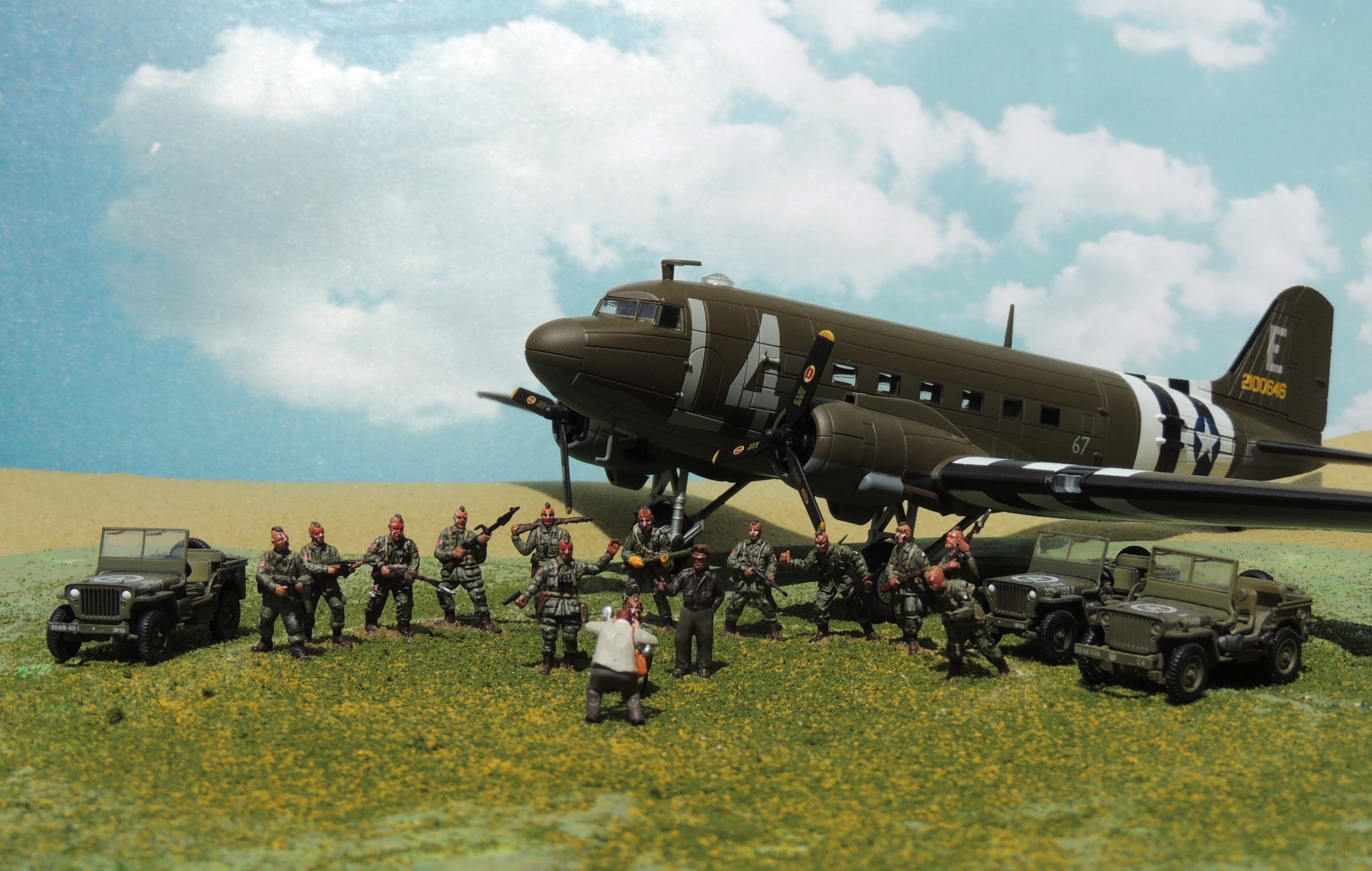

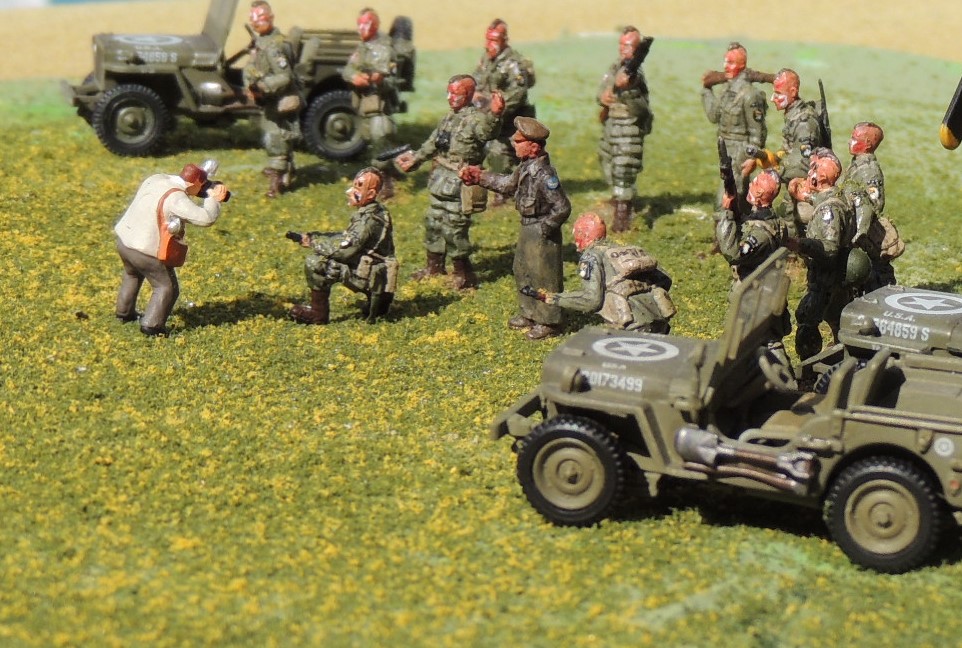
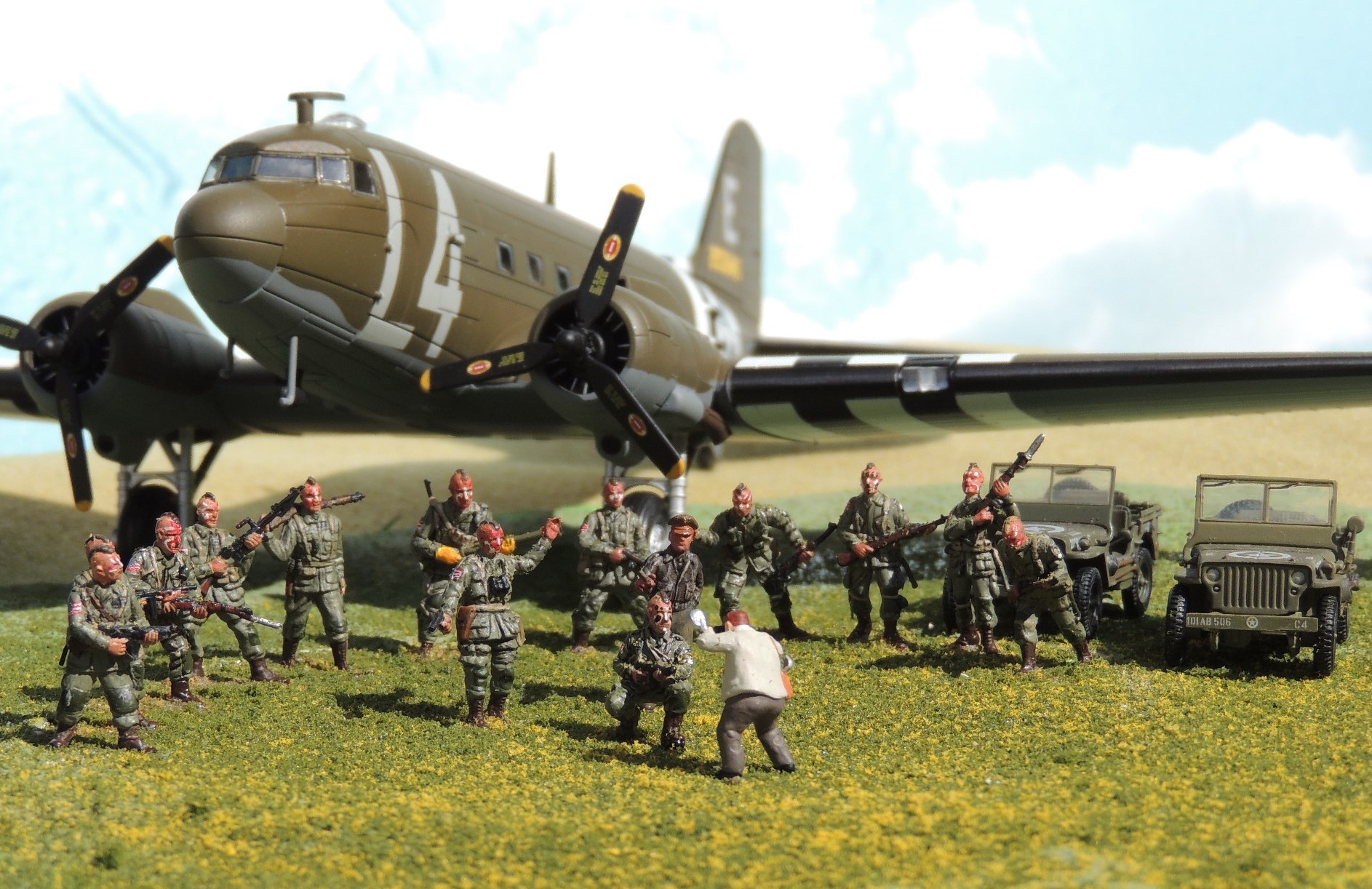
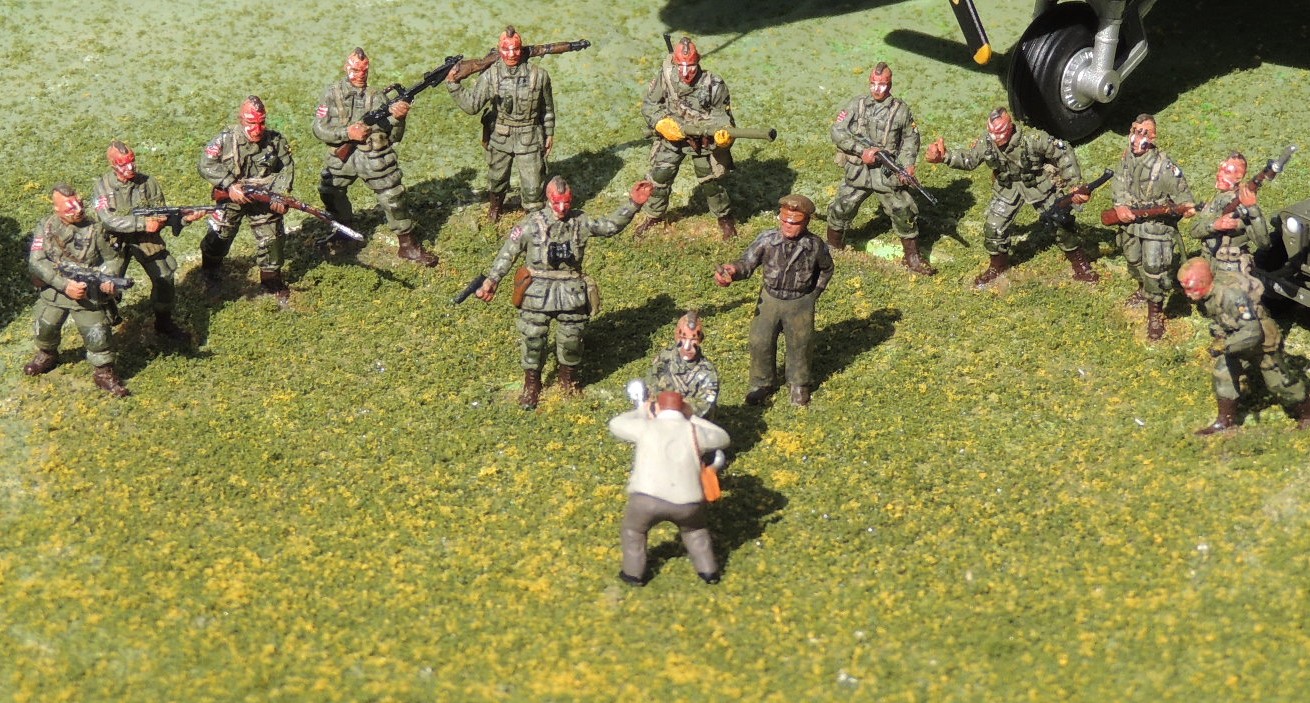


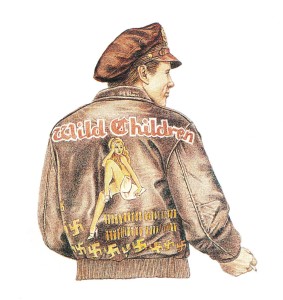
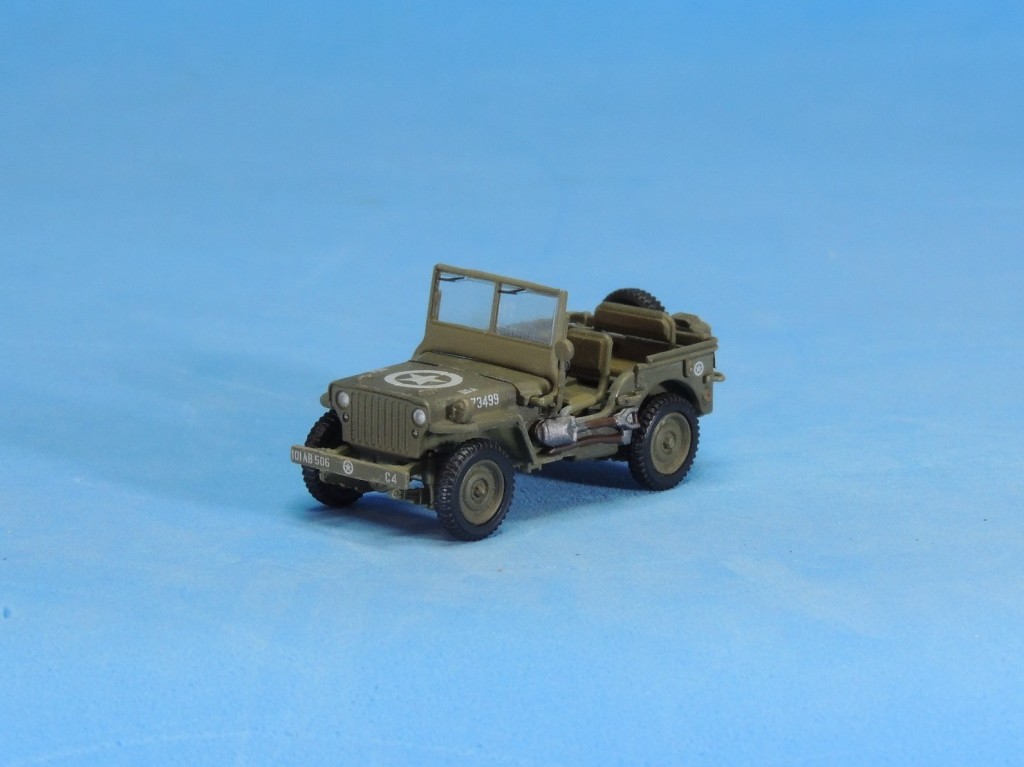
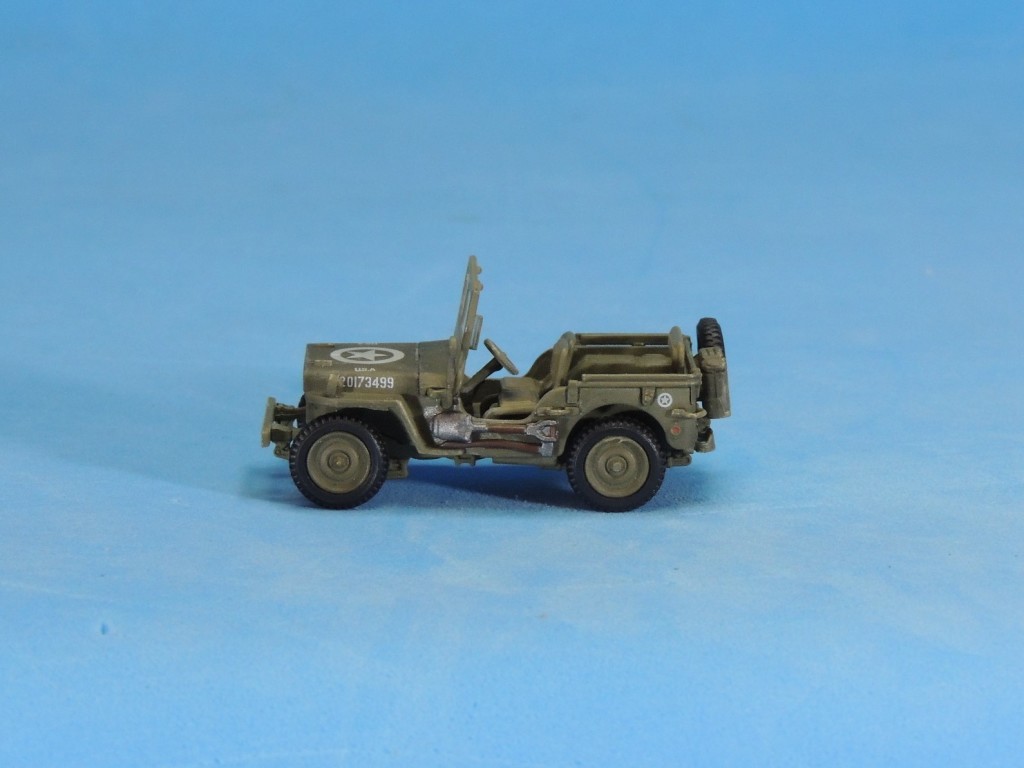
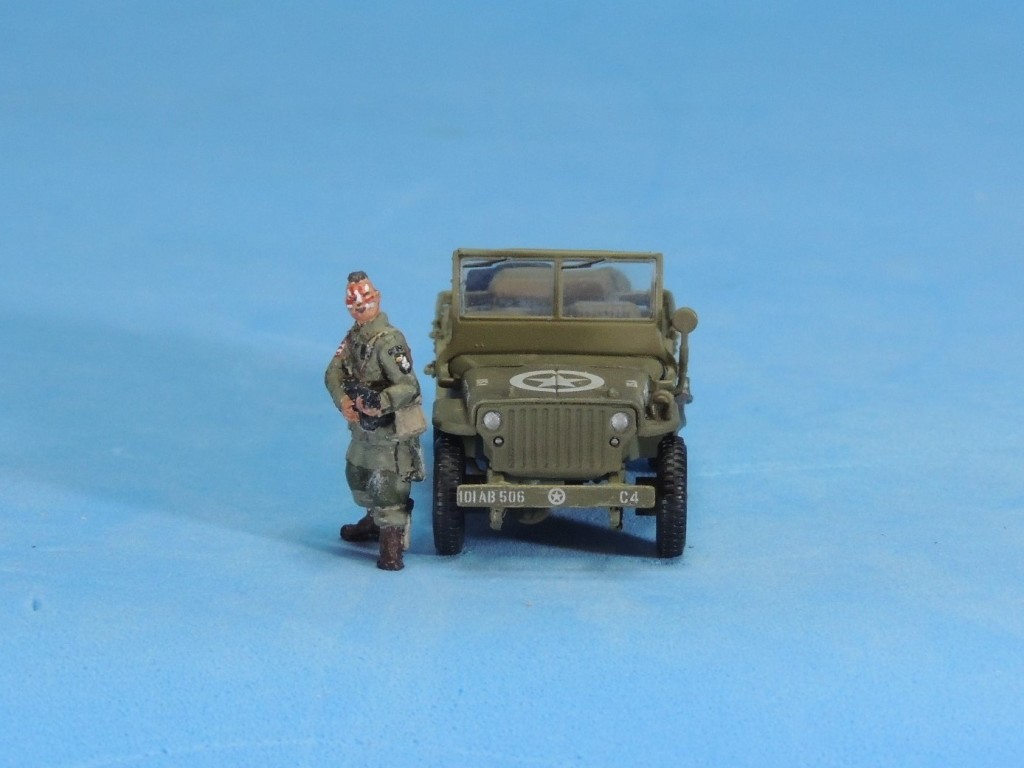
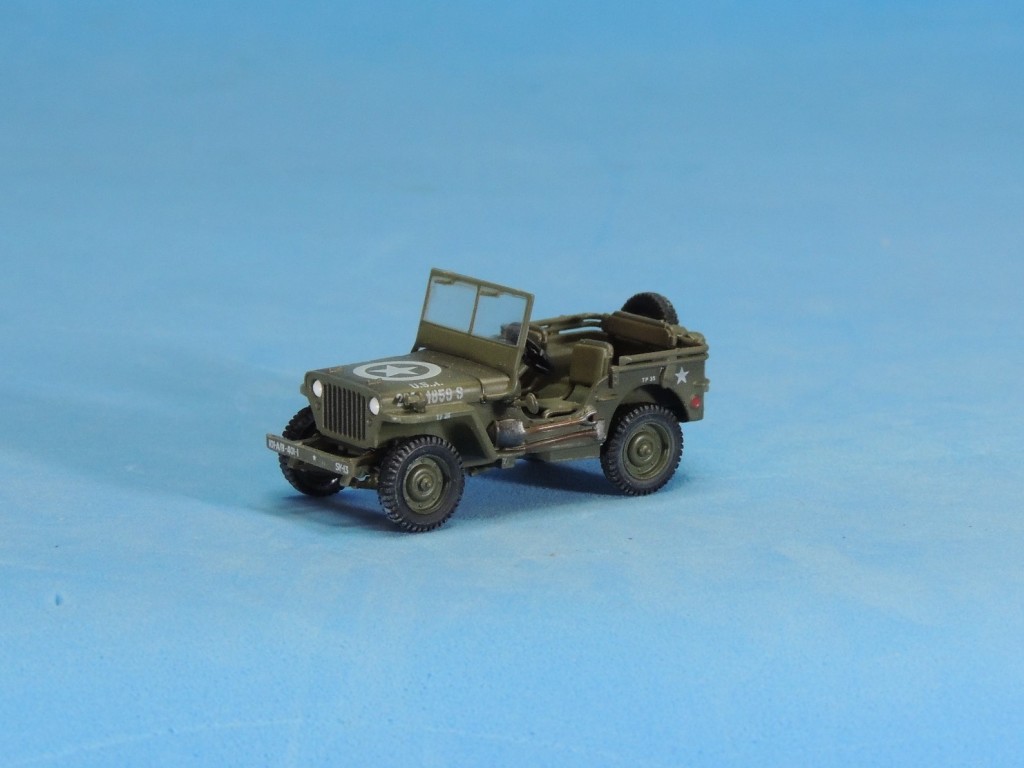
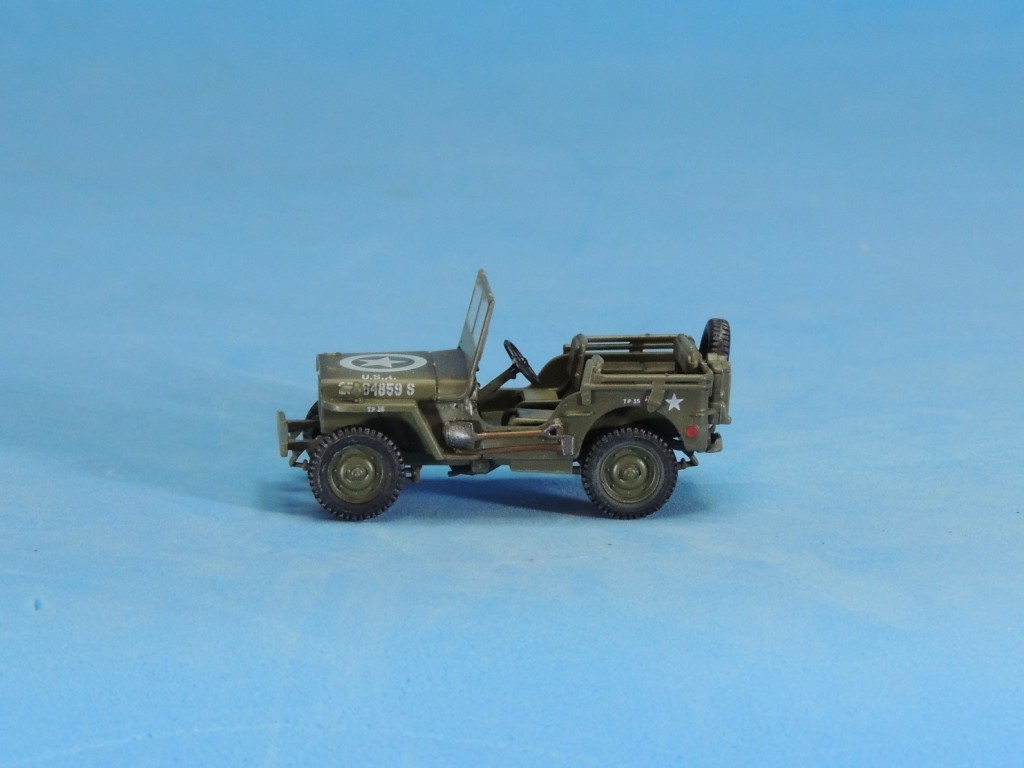
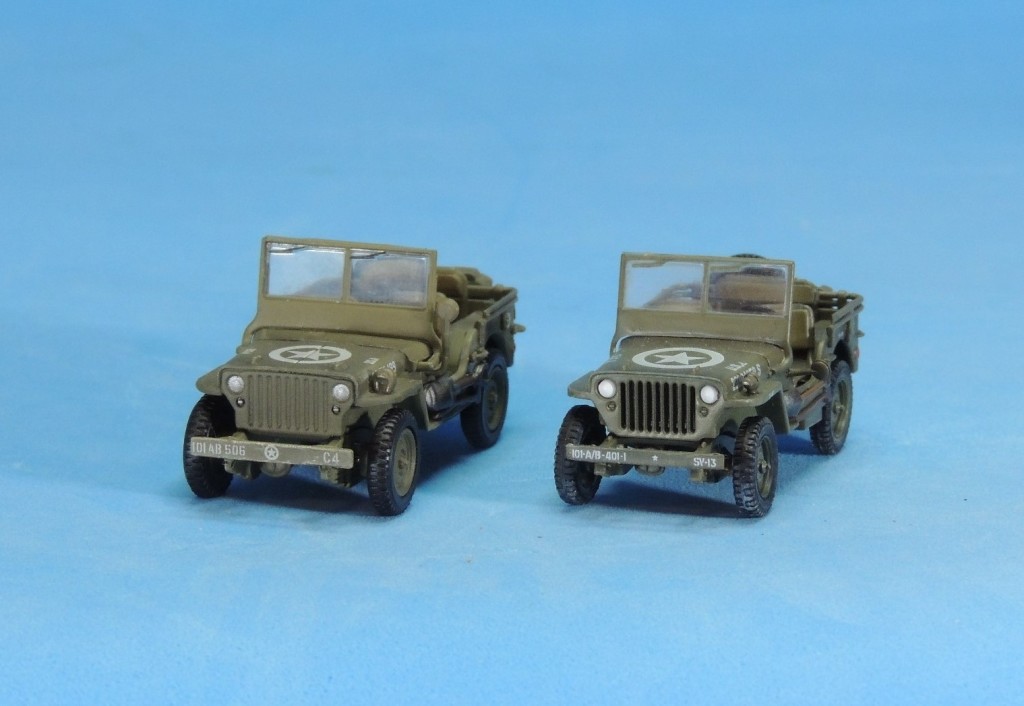
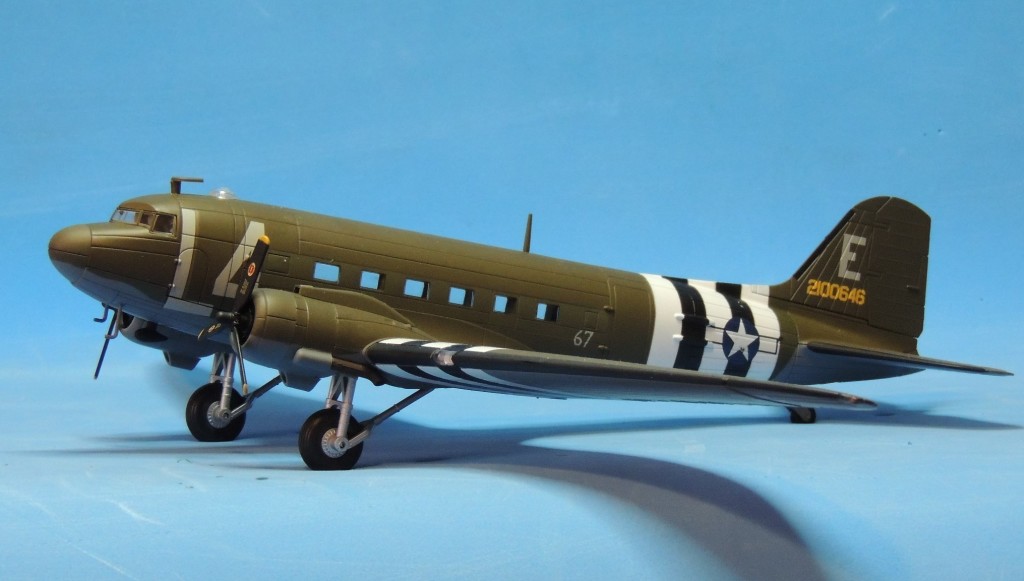
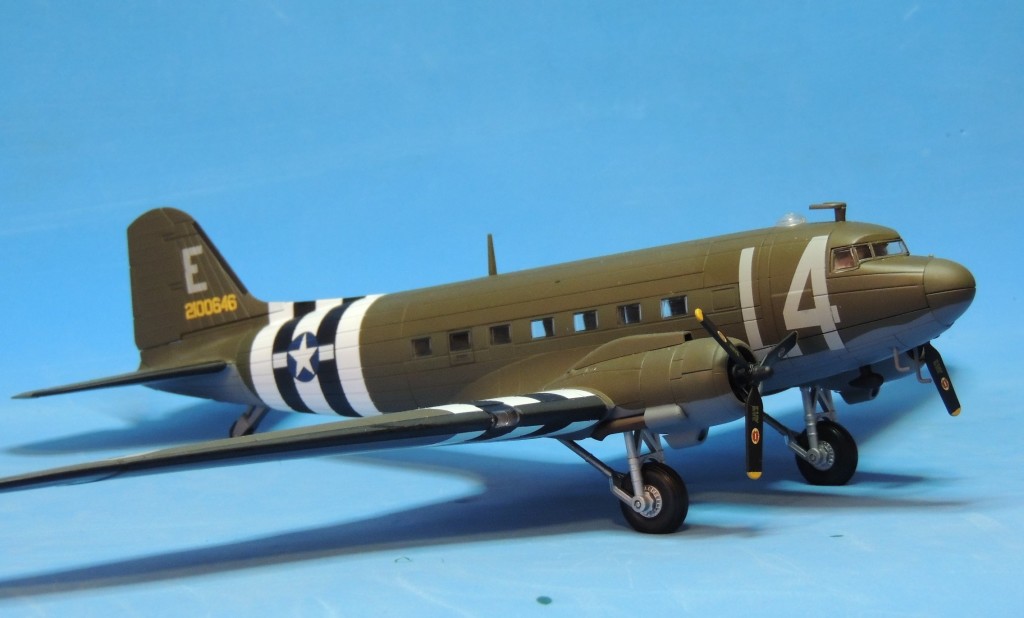
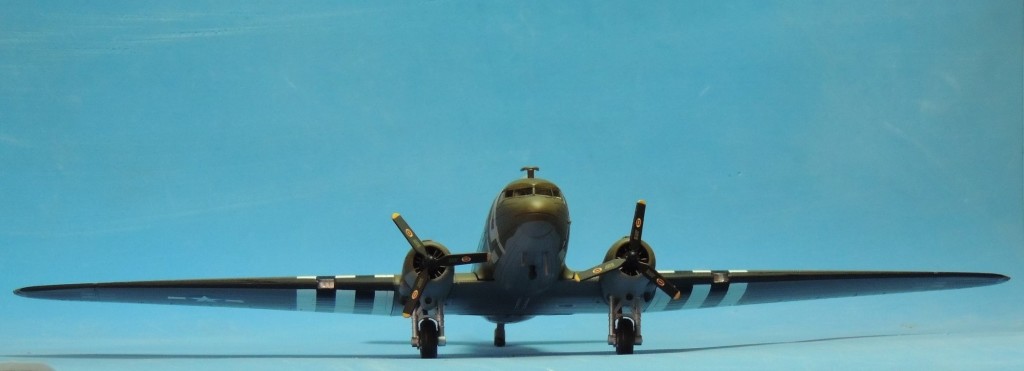
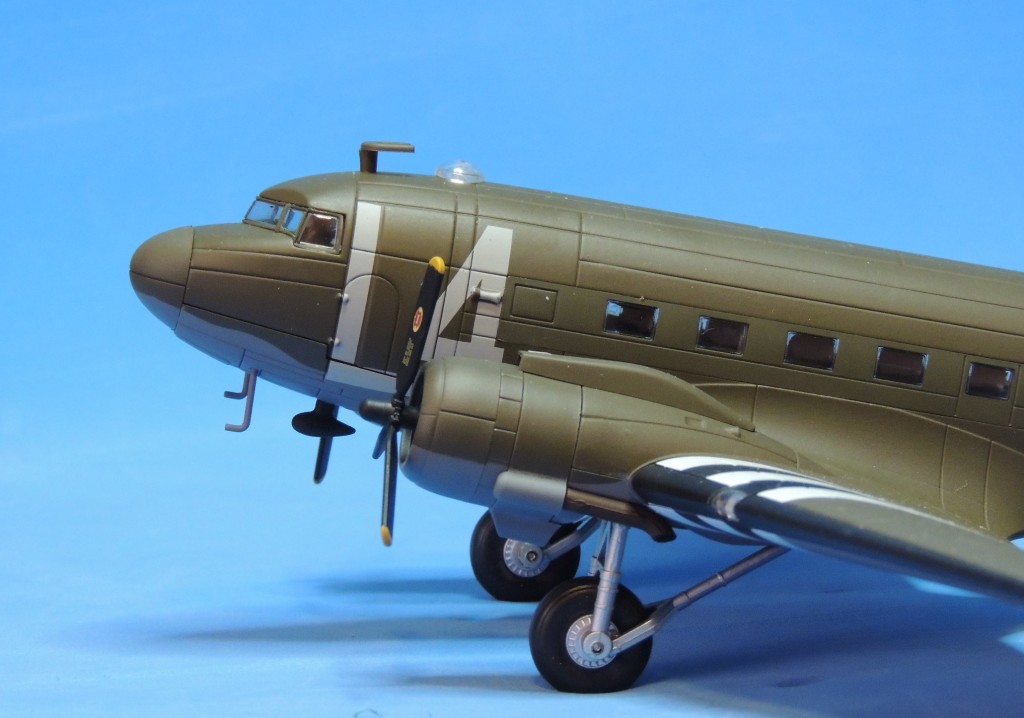
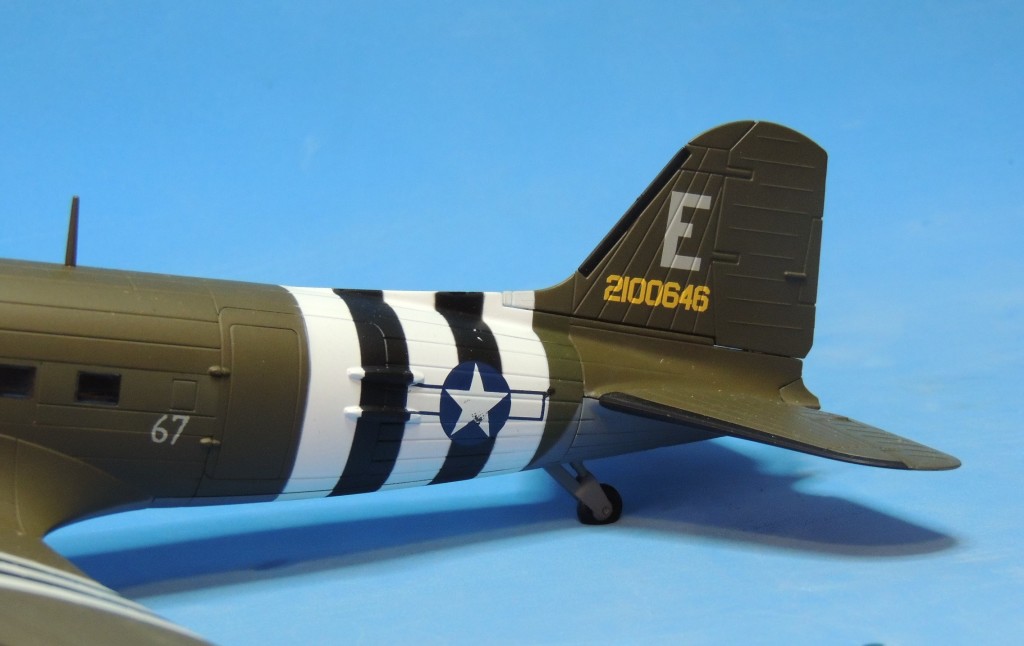
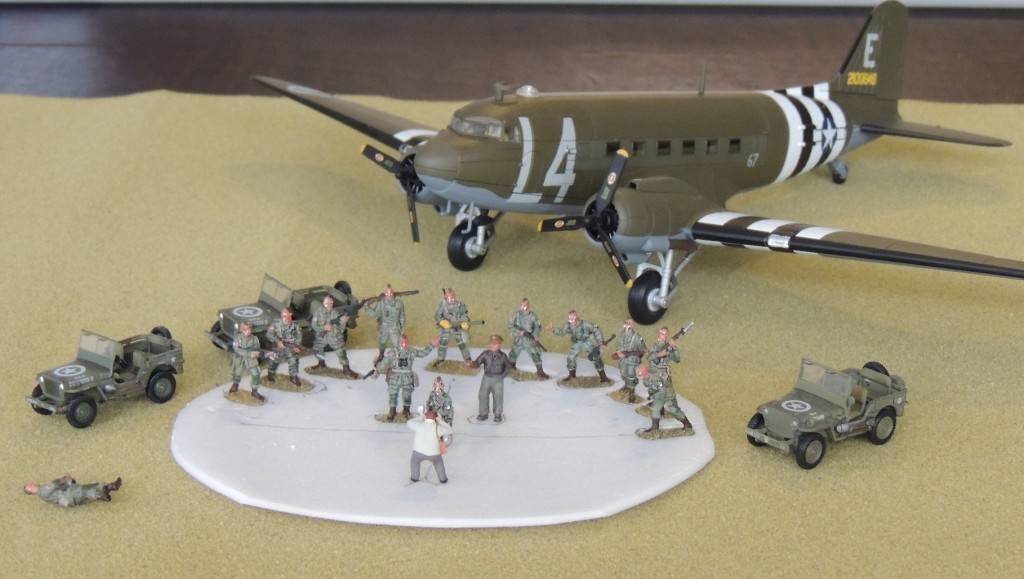
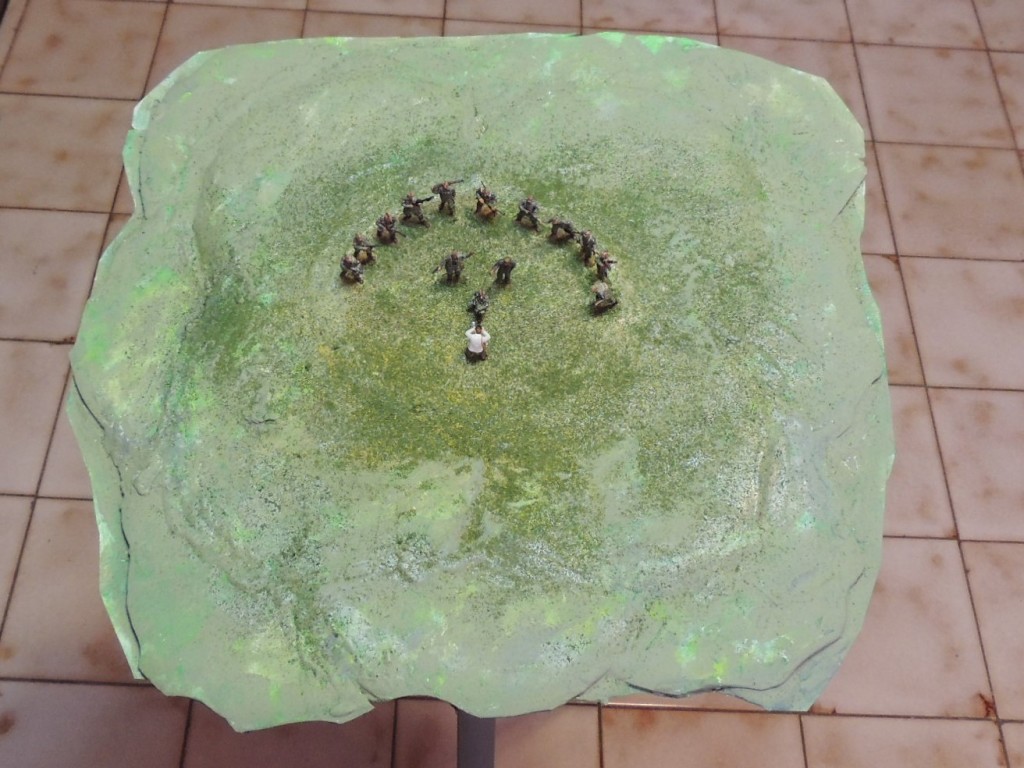
 Following a couple of hours of frustration attempting to salvage the photos by digitally cutting out the background, I decided to photograph the scene again. I was fairly certain that when I glued the silk poster to the cardboard backing I had achieved a good bond and there had been no warping. Still, I carefully unglued the poster and reglued it, using Elmer’s spray adhesive.
Following a couple of hours of frustration attempting to salvage the photos by digitally cutting out the background, I decided to photograph the scene again. I was fairly certain that when I glued the silk poster to the cardboard backing I had achieved a good bond and there had been no warping. Still, I carefully unglued the poster and reglued it, using Elmer’s spray adhesive.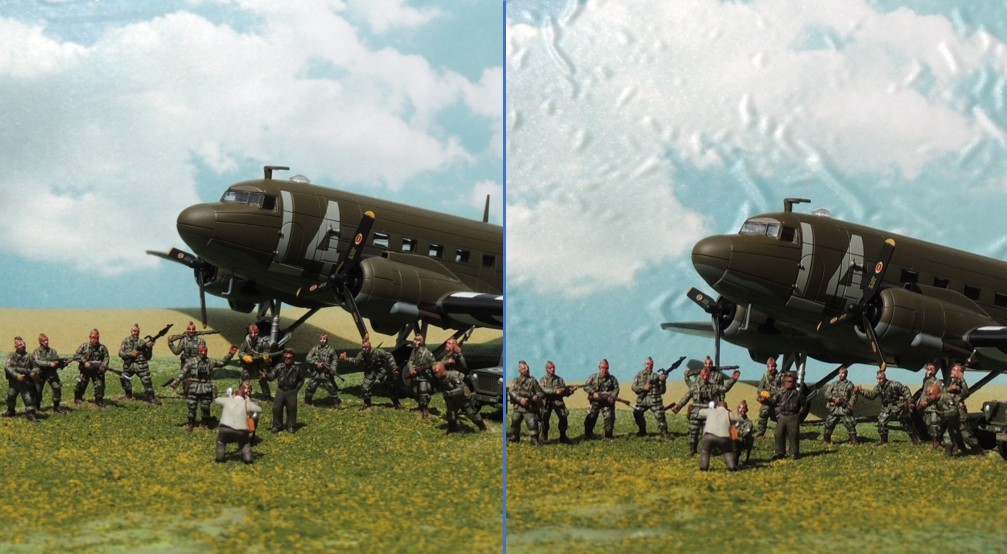
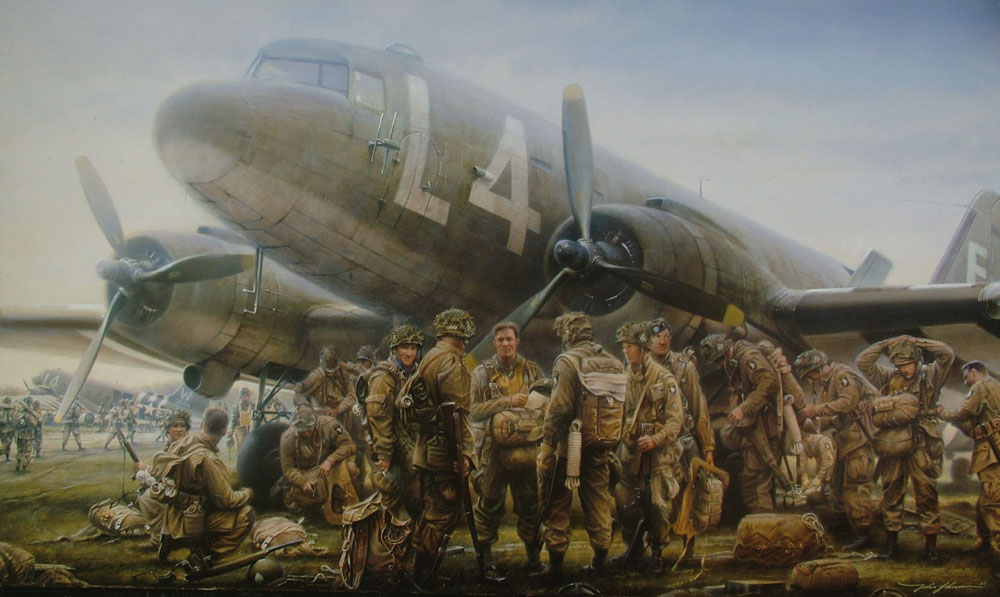 I hope you enjoyed this simple diorama and the Filthy Thirteen series of posts. Again, if something looks amiss, please let me know. I would be delighted to correct inaccurate information so that this may be useful for other 1/72 scale collectors and wargamers. As always, comments, questions, corrections, and observations are welcome.
I hope you enjoyed this simple diorama and the Filthy Thirteen series of posts. Again, if something looks amiss, please let me know. I would be delighted to correct inaccurate information so that this may be useful for other 1/72 scale collectors and wargamers. As always, comments, questions, corrections, and observations are welcome.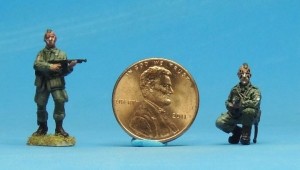
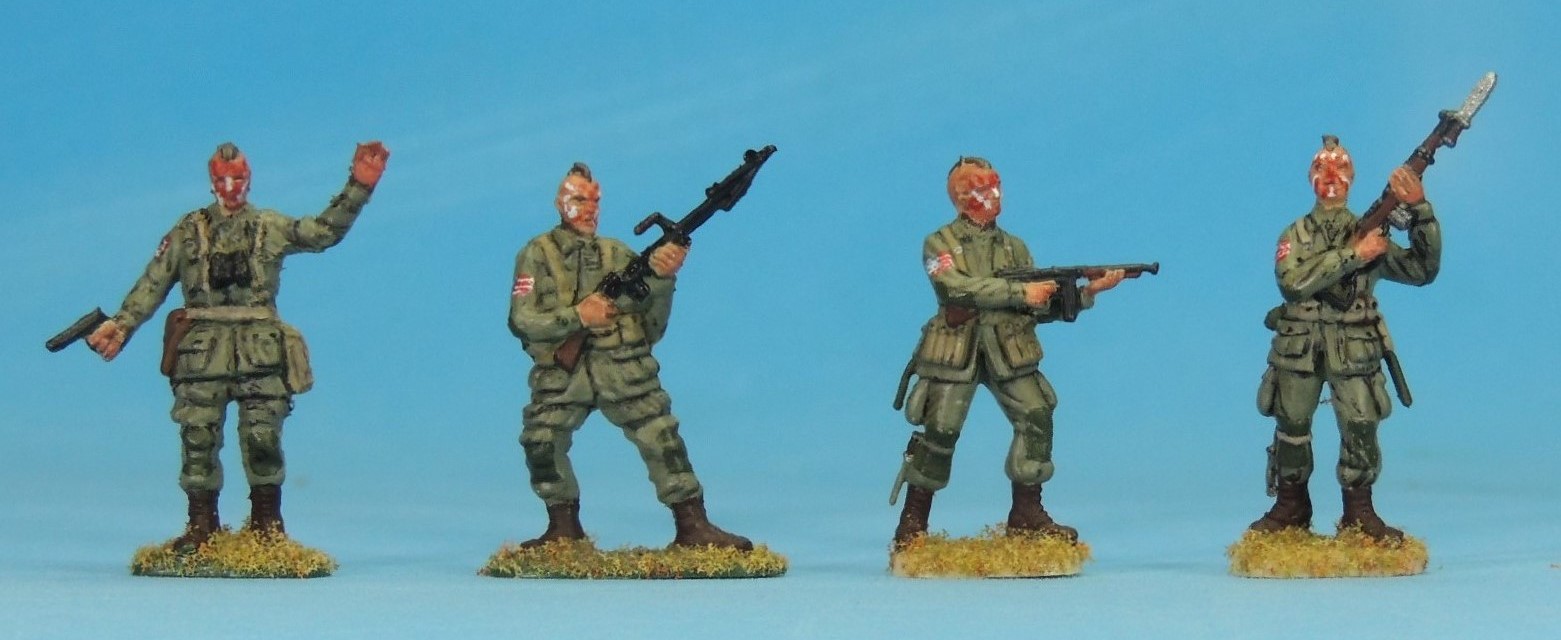
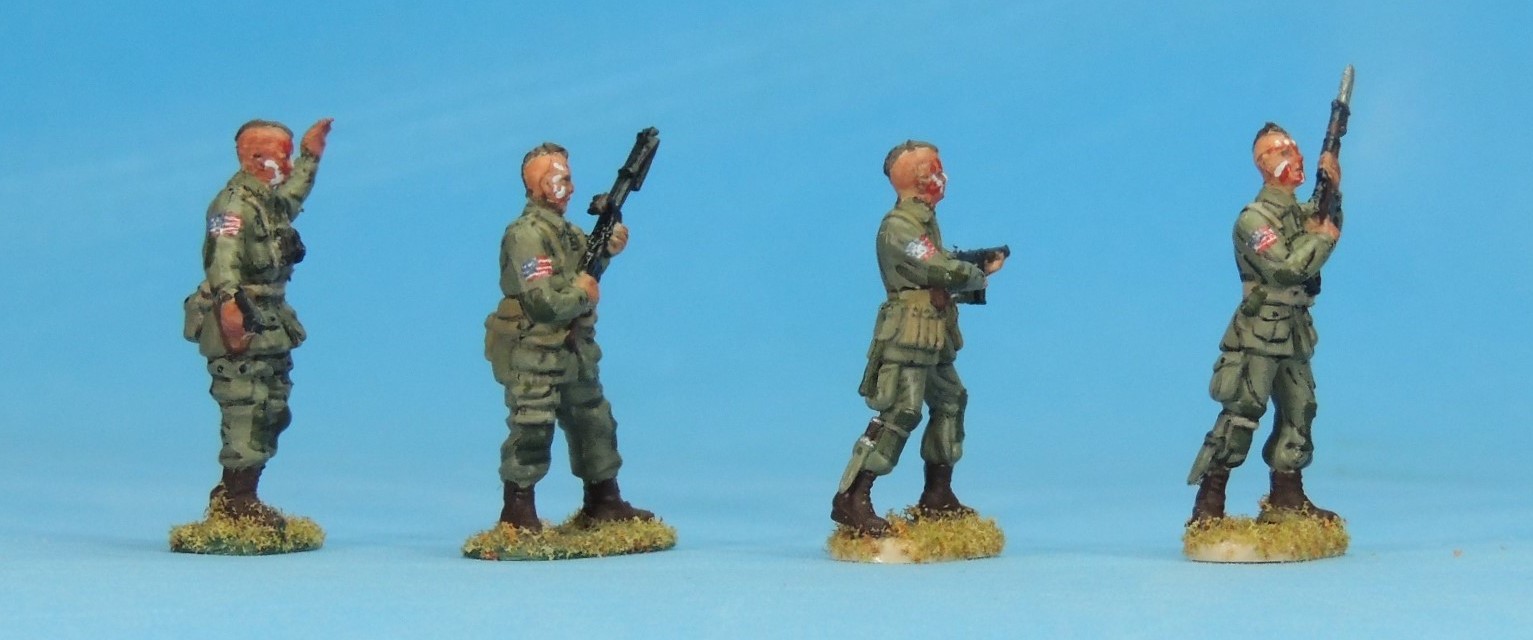
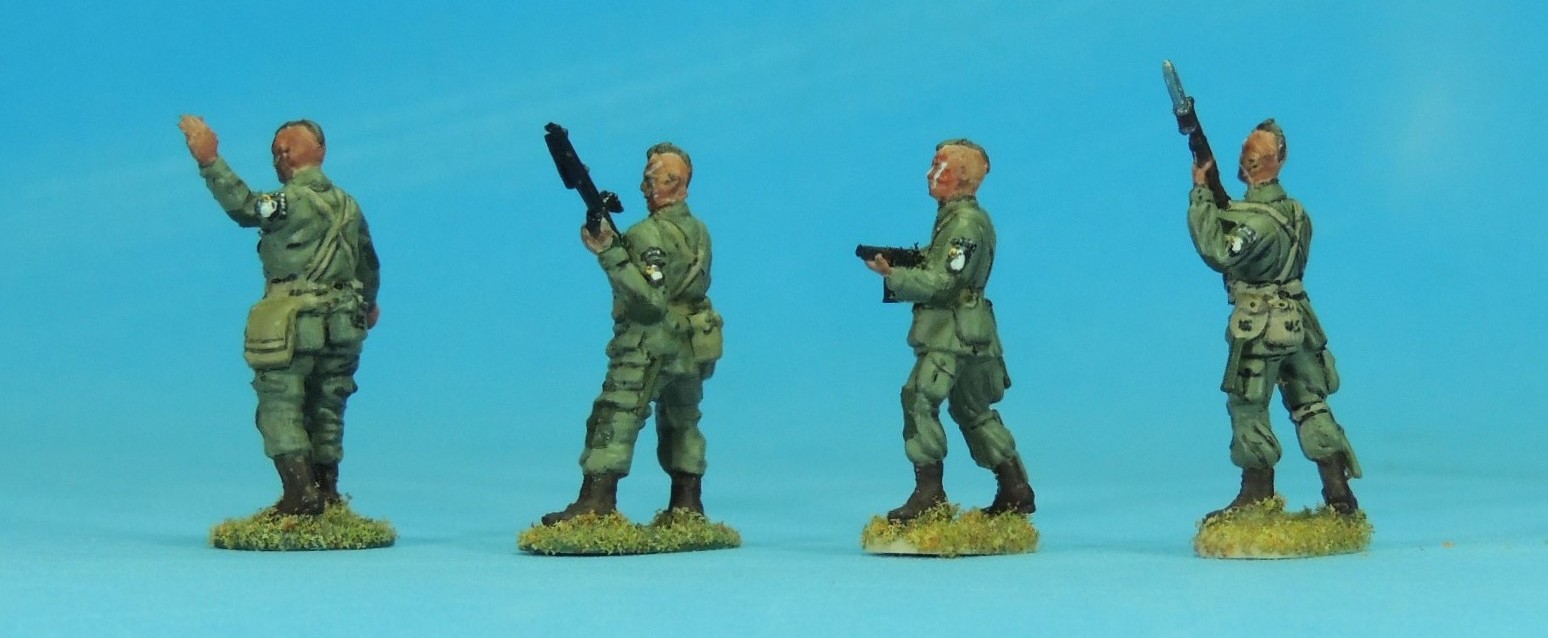
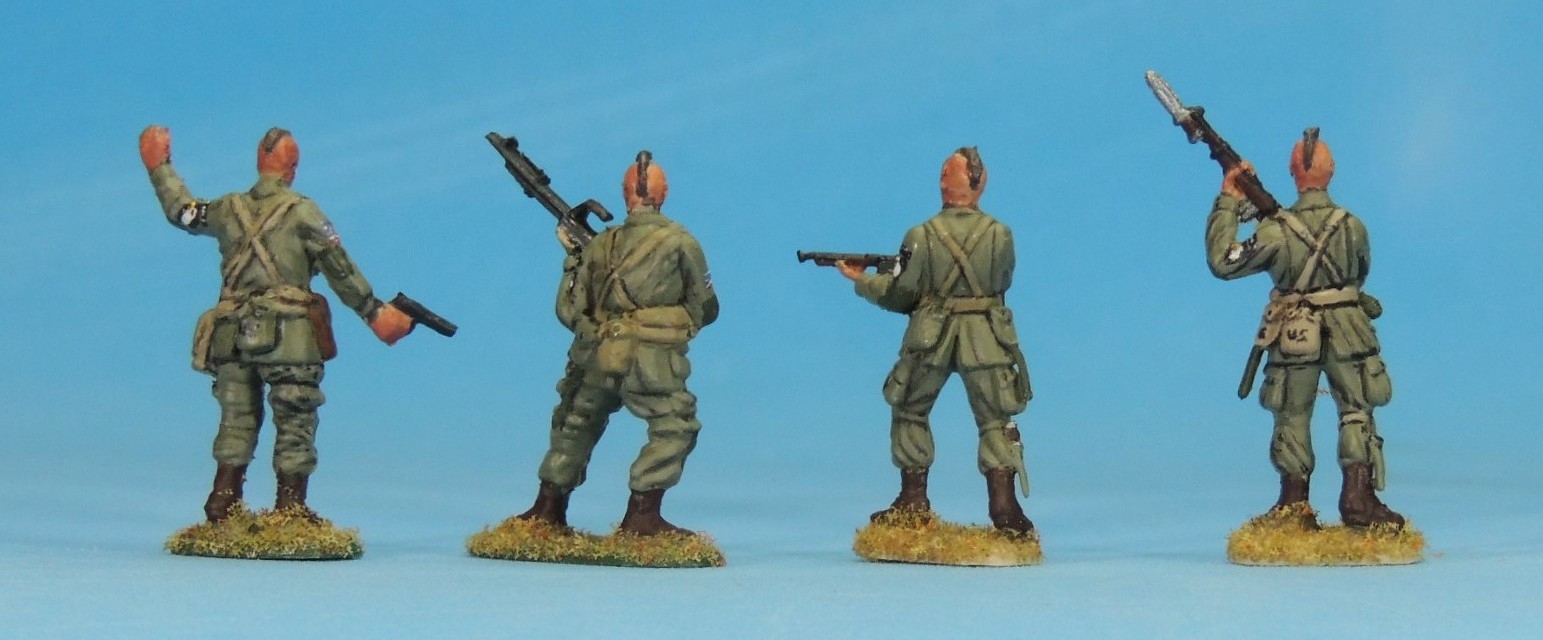
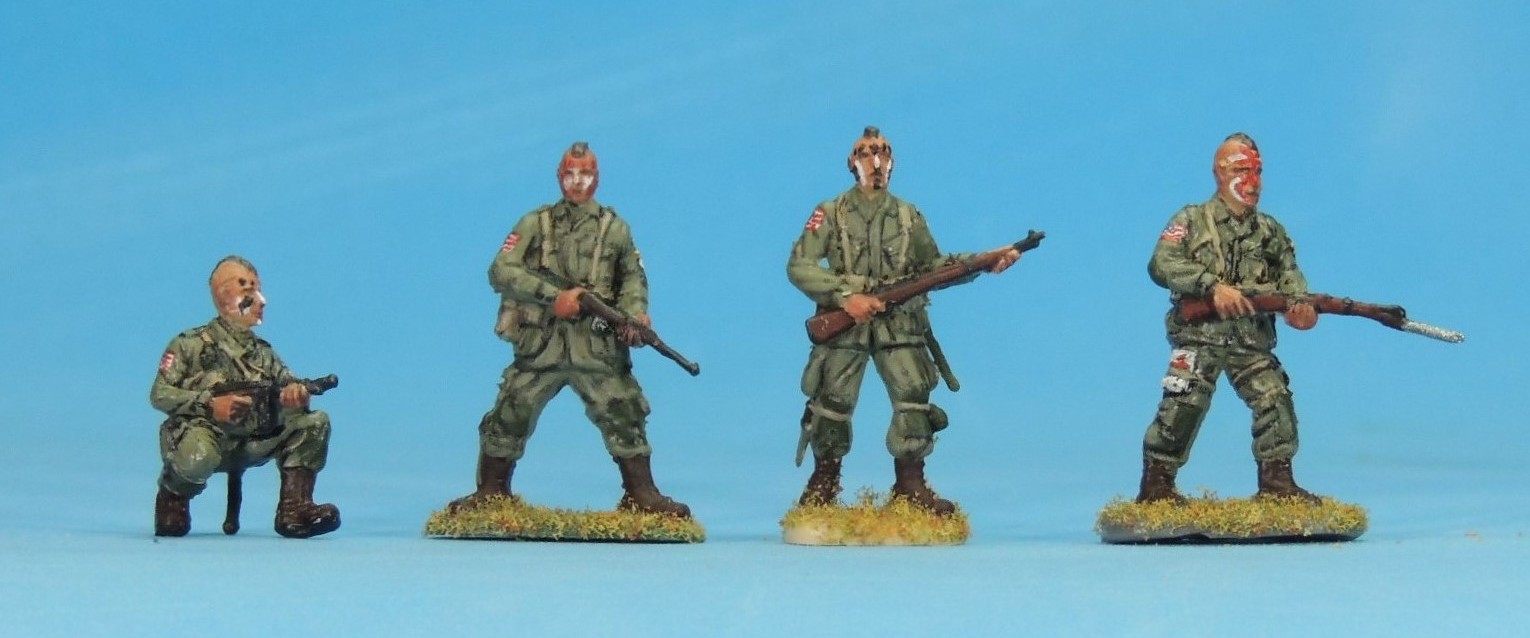
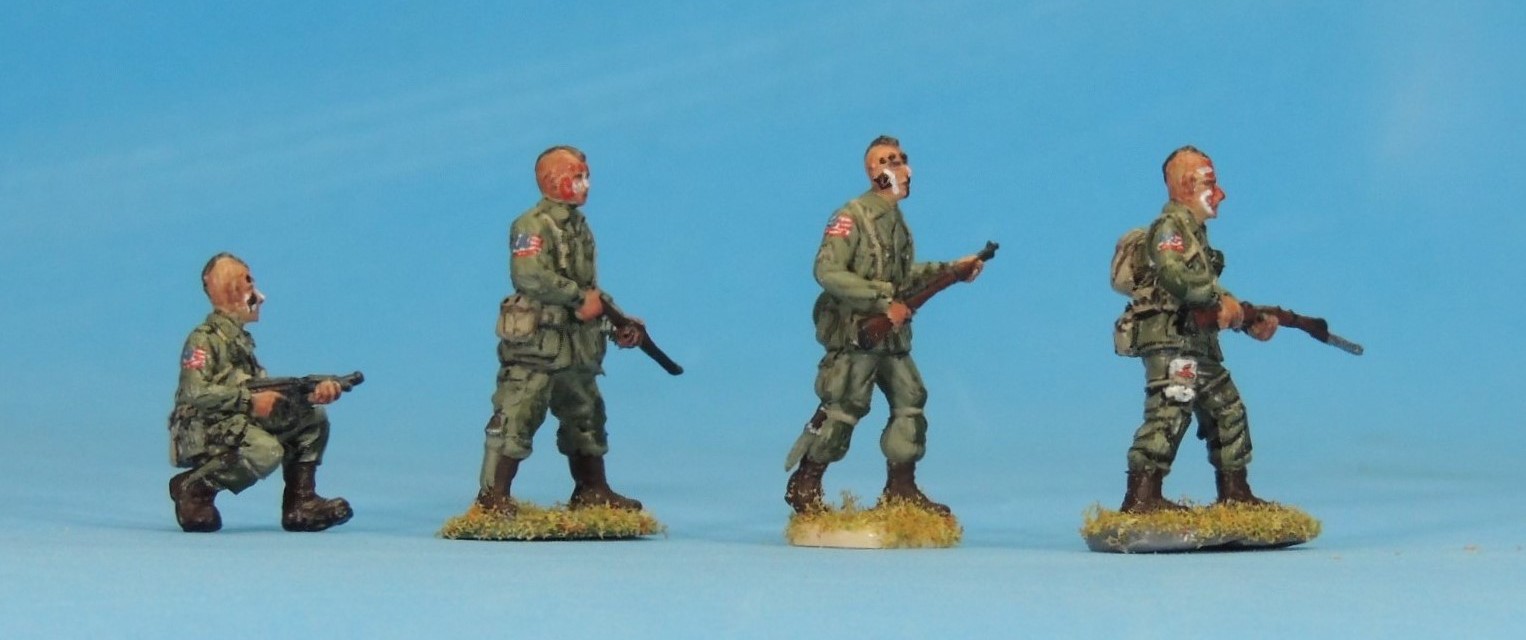
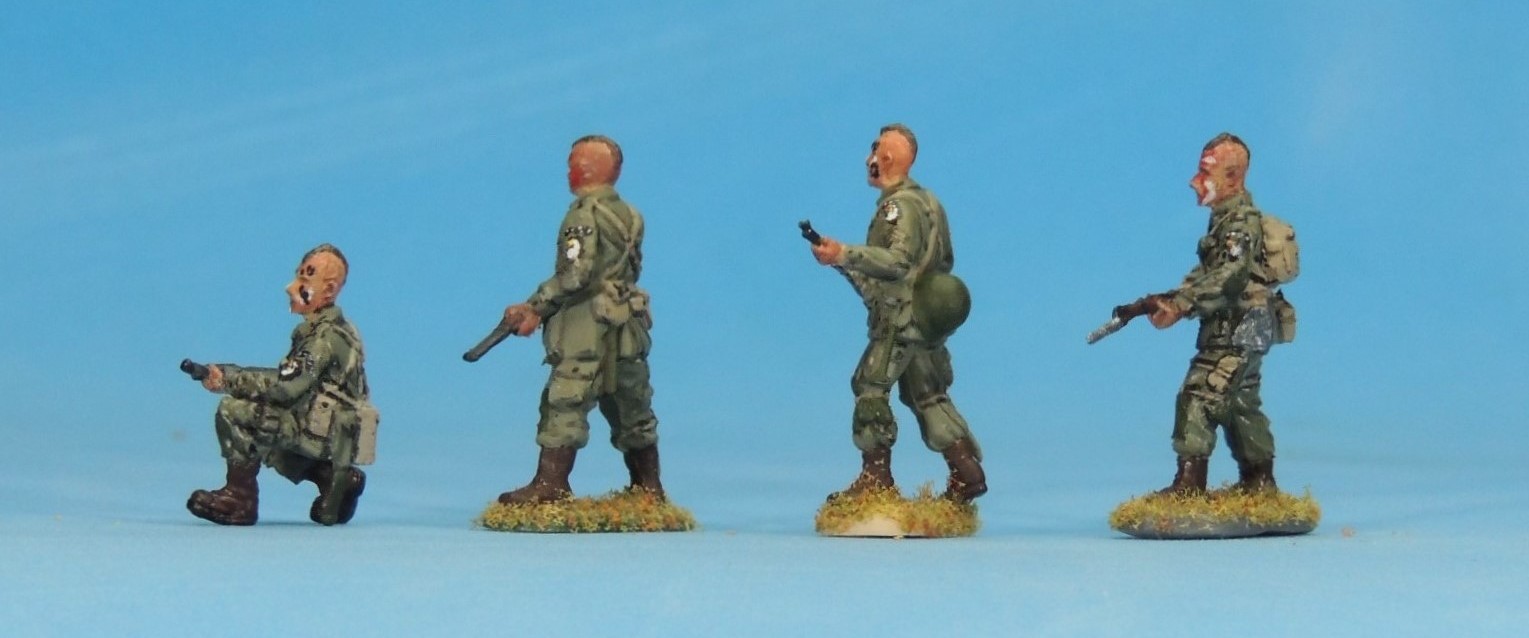
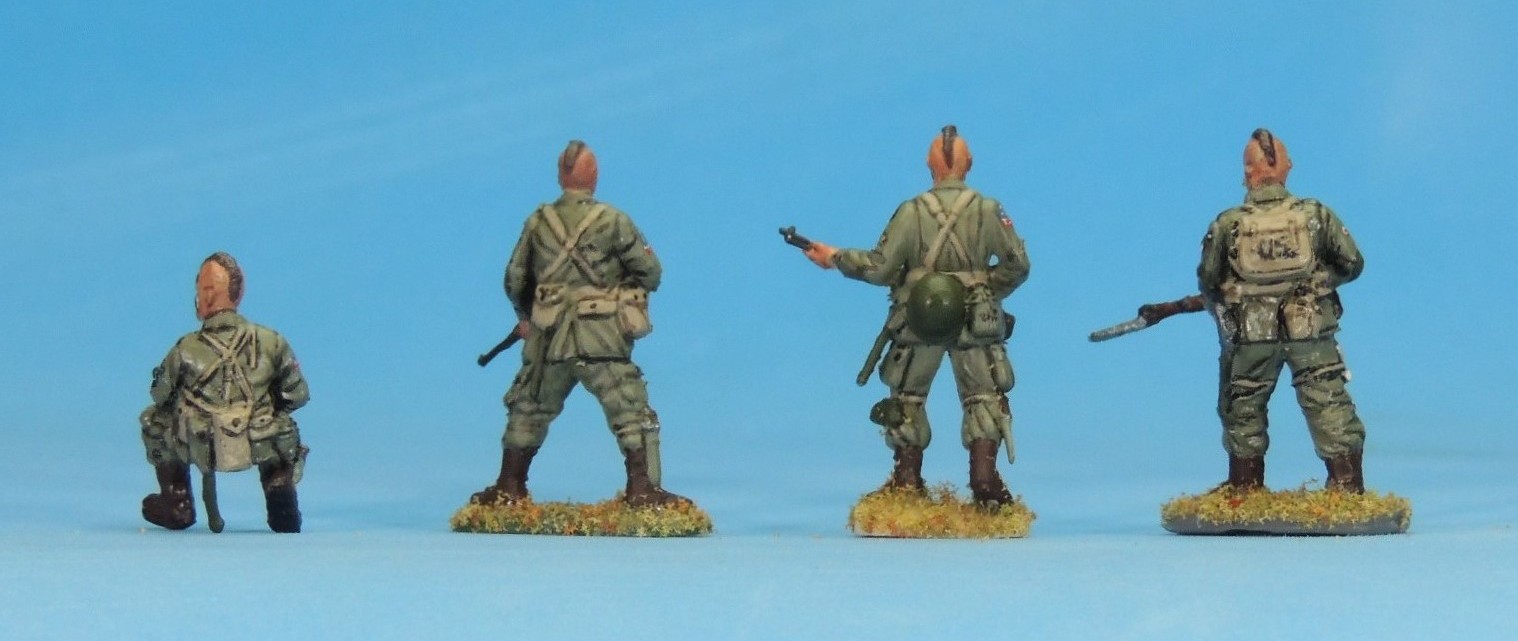

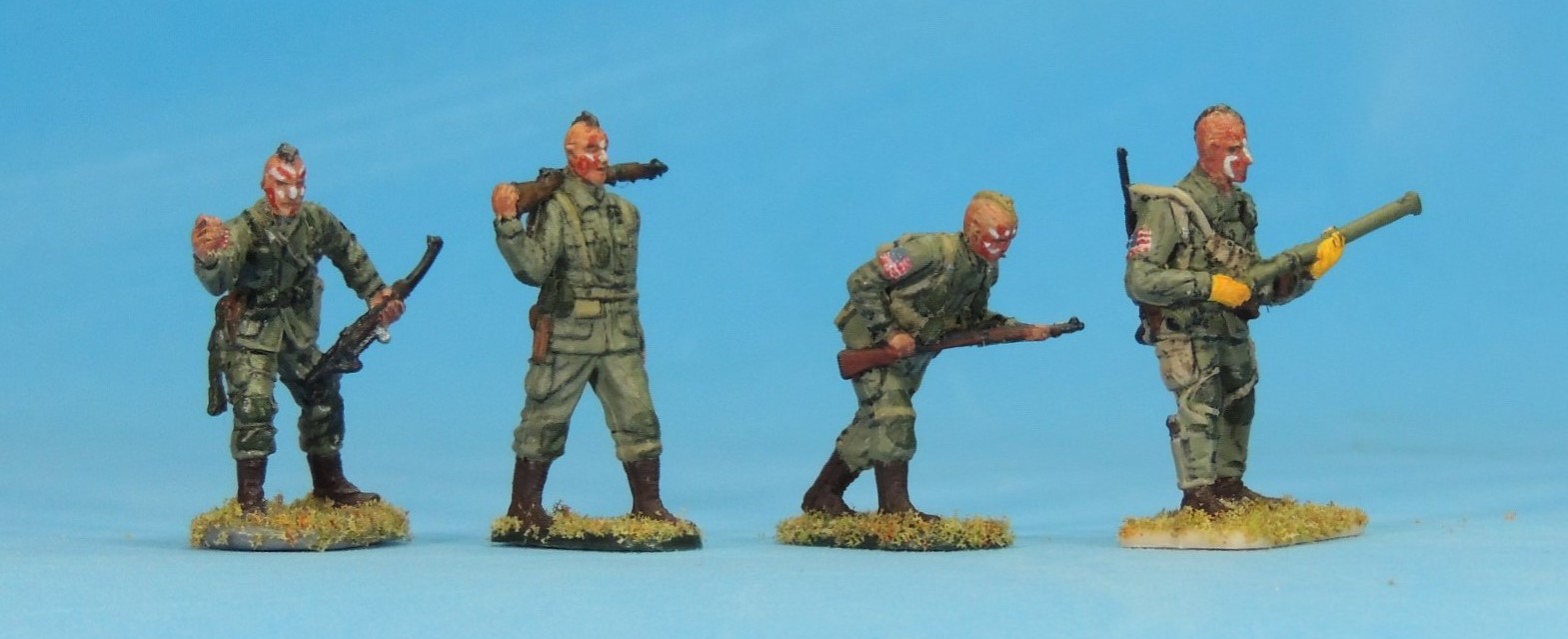

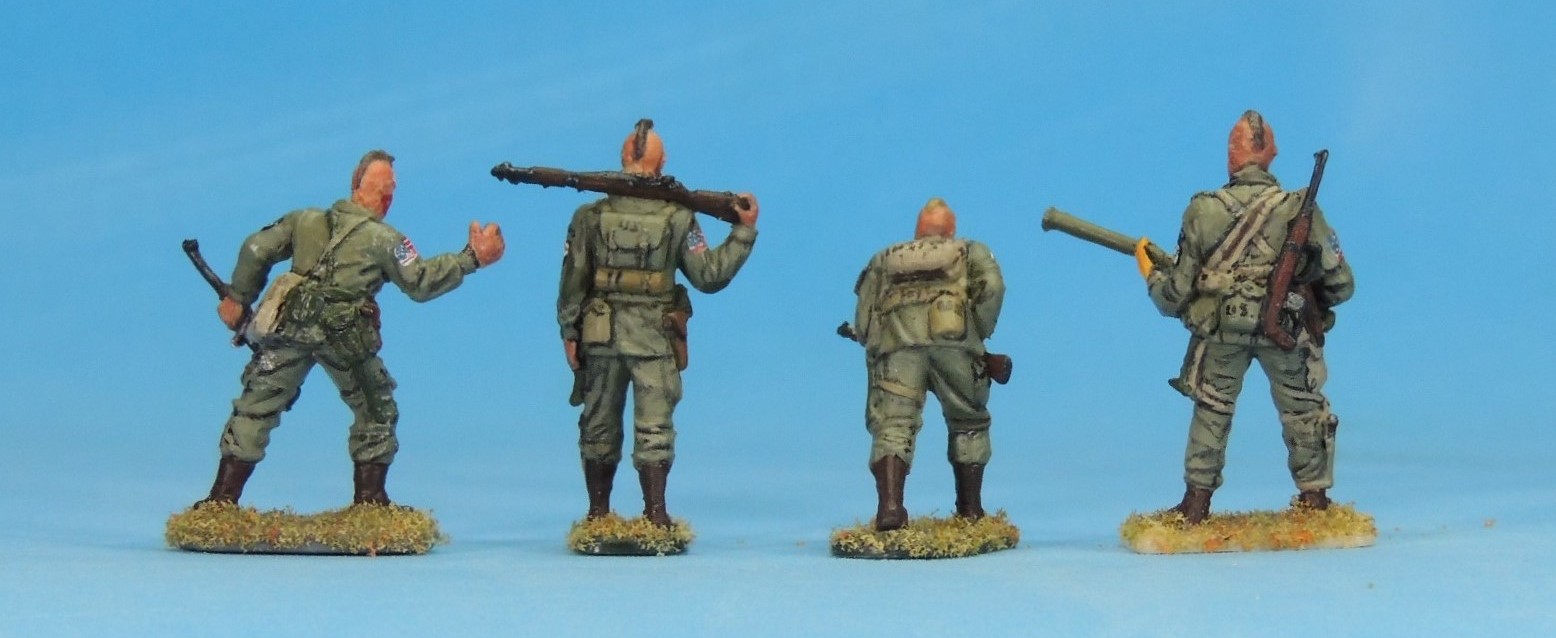
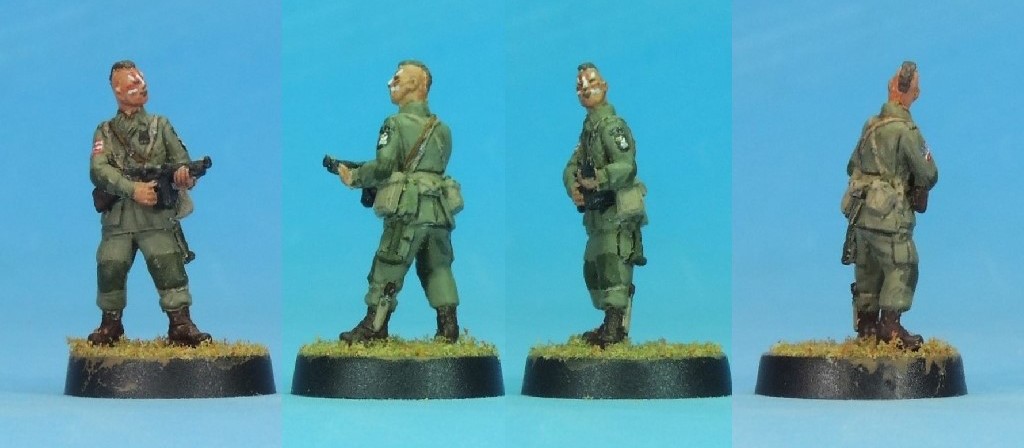
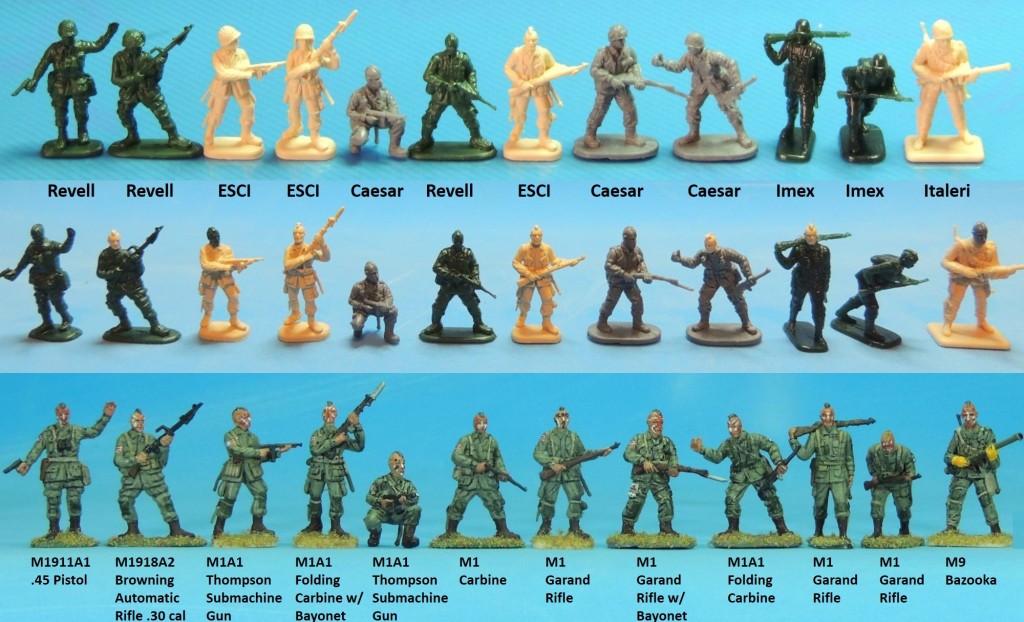

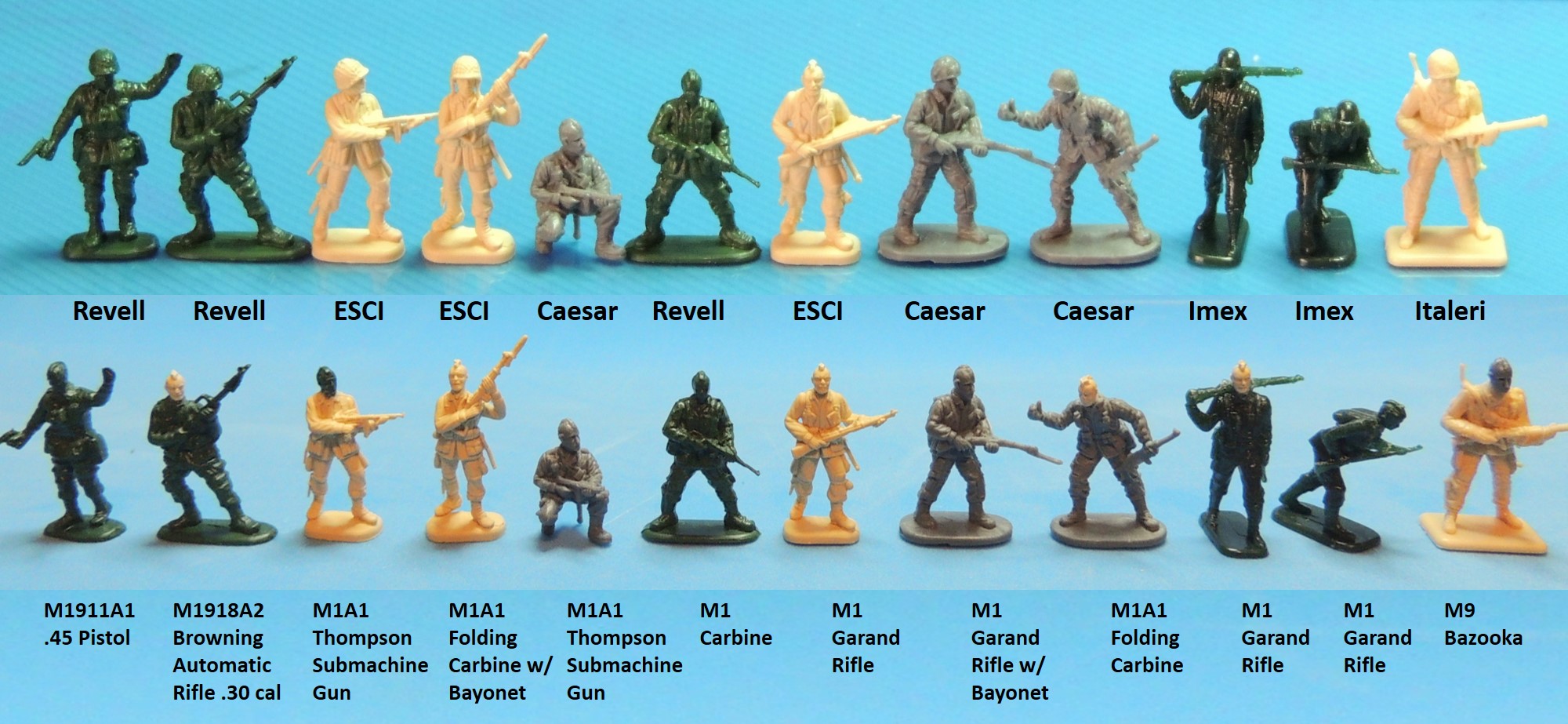
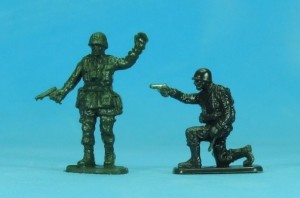
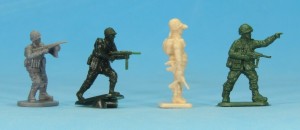
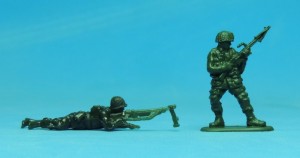
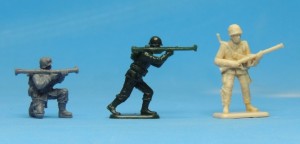

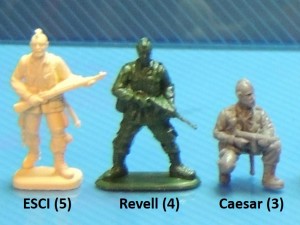 only exception, lacking sharpness in detail, though still not a bad effort. The ESCI, Revell, and Caesar sets each include one Pathfinder pose, fortunately with 5, 4, and 3 samples in each set, respectively. See photo inset at left. Thus, we have a total of 12 figures: three different ready-made figures and nine extra copies of those figures. To create 12 different figures with Mohawk haircuts, we take the heads of the nine extra copies and transplant them on the torsos of U.S. Airborne figures from the different sets.
only exception, lacking sharpness in detail, though still not a bad effort. The ESCI, Revell, and Caesar sets each include one Pathfinder pose, fortunately with 5, 4, and 3 samples in each set, respectively. See photo inset at left. Thus, we have a total of 12 figures: three different ready-made figures and nine extra copies of those figures. To create 12 different figures with Mohawk haircuts, we take the heads of the nine extra copies and transplant them on the torsos of U.S. Airborne figures from the different sets. 
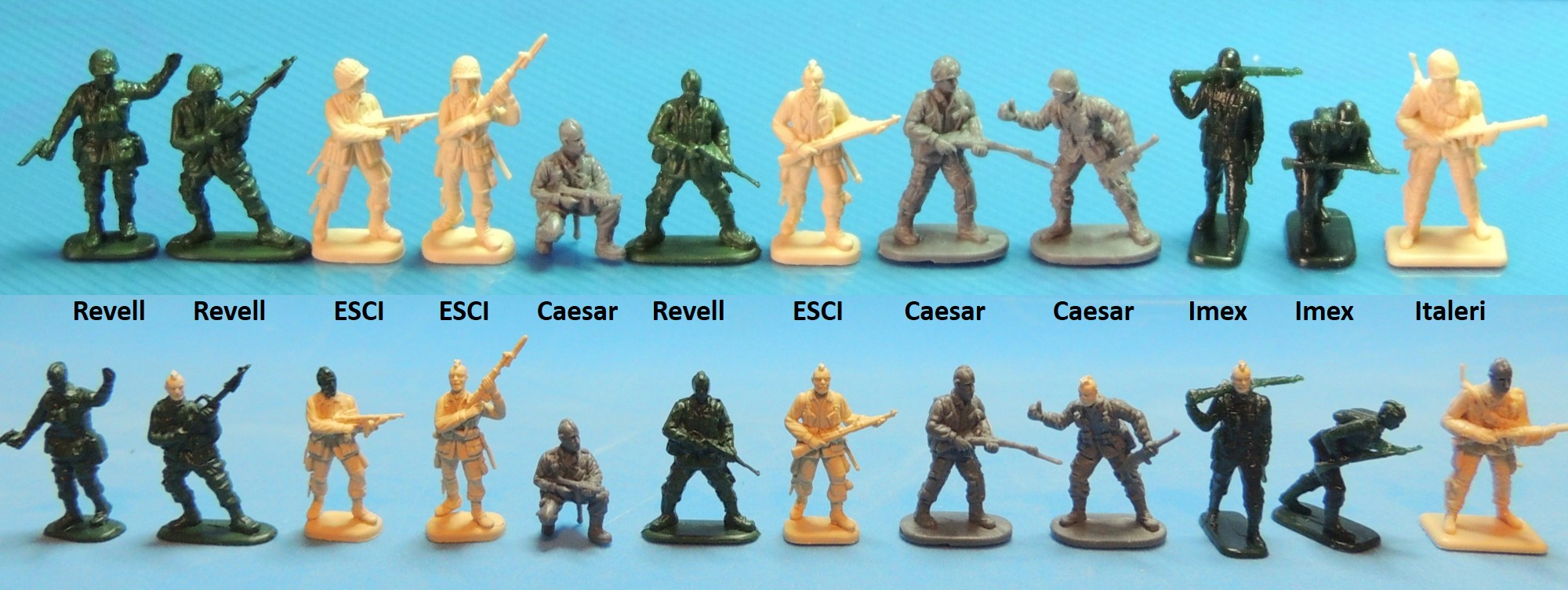
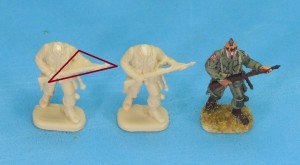
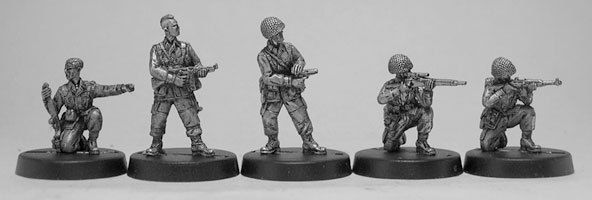


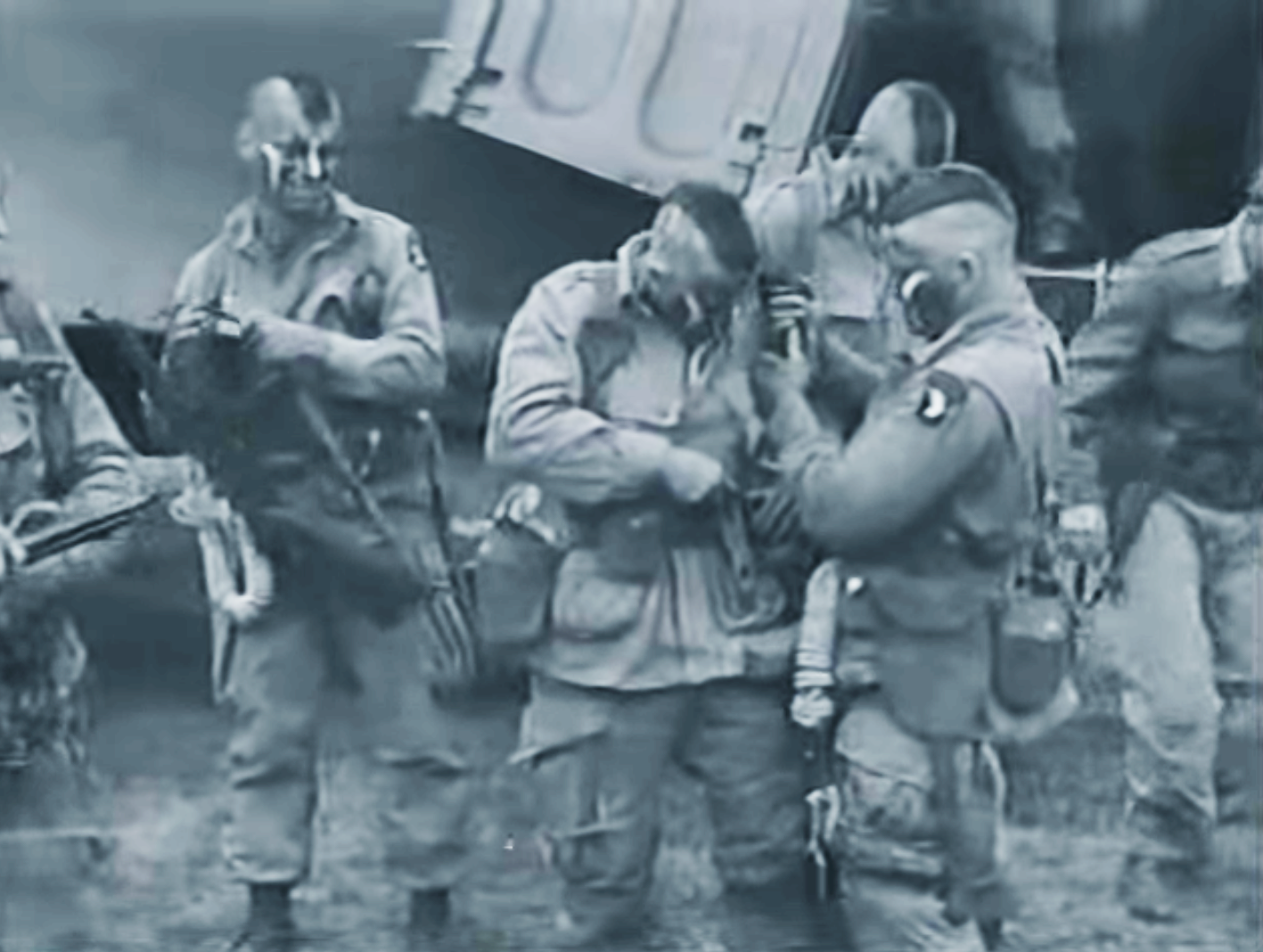
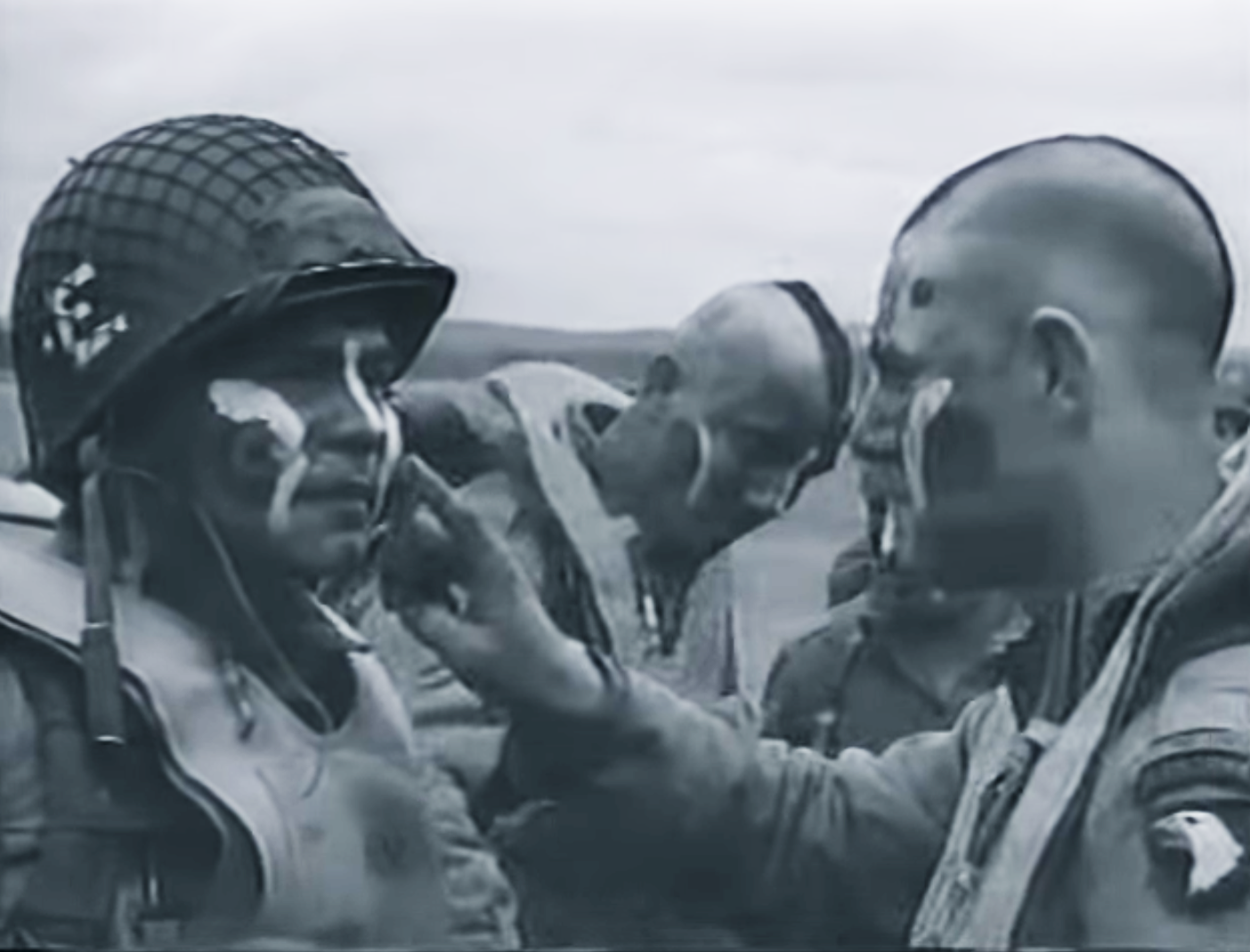
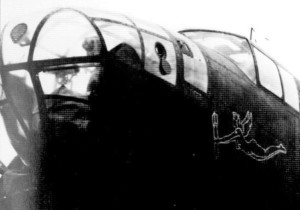 Also from Chun’s book, here’s a close-up of the insignia on the starboard side of the fuselage: the white outline of a curvaceous angel about to release a bomb. The irony of an angel ready to drop death and destruction from above should not be lost on us, biblical though it may be. Given that the Doolittle Raid occurred only four months after the U.S. entry into the war, this is likely one of the first examples of pin-up art on an American aircraft, if indeed a naked angel can be considered a pin-up. Note the dark smudge directly in front of the bomb in the angel’s hands where the name “Hari Kari-er” was overpainted in darker olive drab, though the reason is unclear.
Also from Chun’s book, here’s a close-up of the insignia on the starboard side of the fuselage: the white outline of a curvaceous angel about to release a bomb. The irony of an angel ready to drop death and destruction from above should not be lost on us, biblical though it may be. Given that the Doolittle Raid occurred only four months after the U.S. entry into the war, this is likely one of the first examples of pin-up art on an American aircraft, if indeed a naked angel can be considered a pin-up. Note the dark smudge directly in front of the bomb in the angel’s hands where the name “Hari Kari-er” was overpainted in darker olive drab, though the reason is unclear. 

